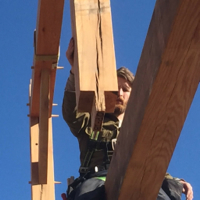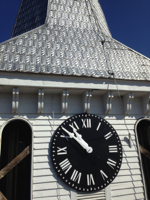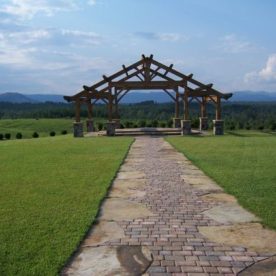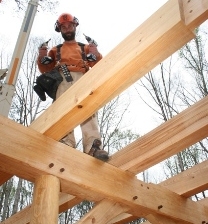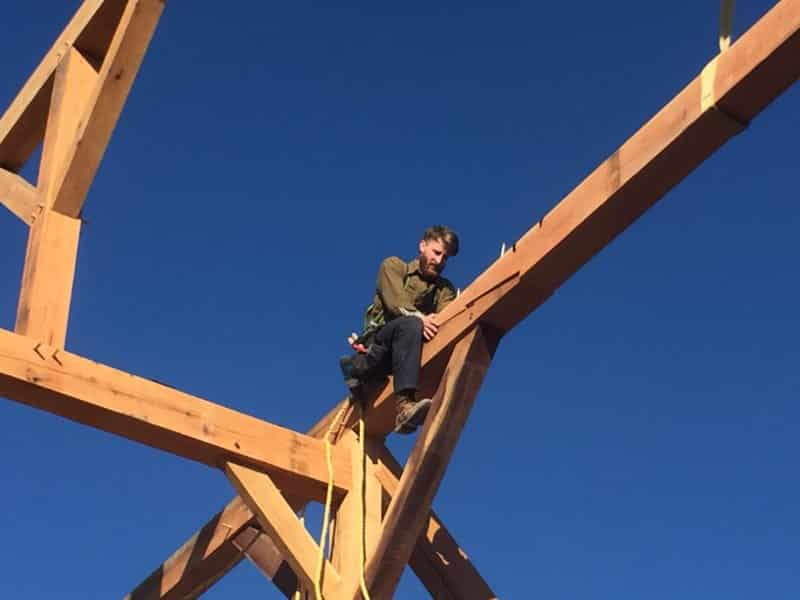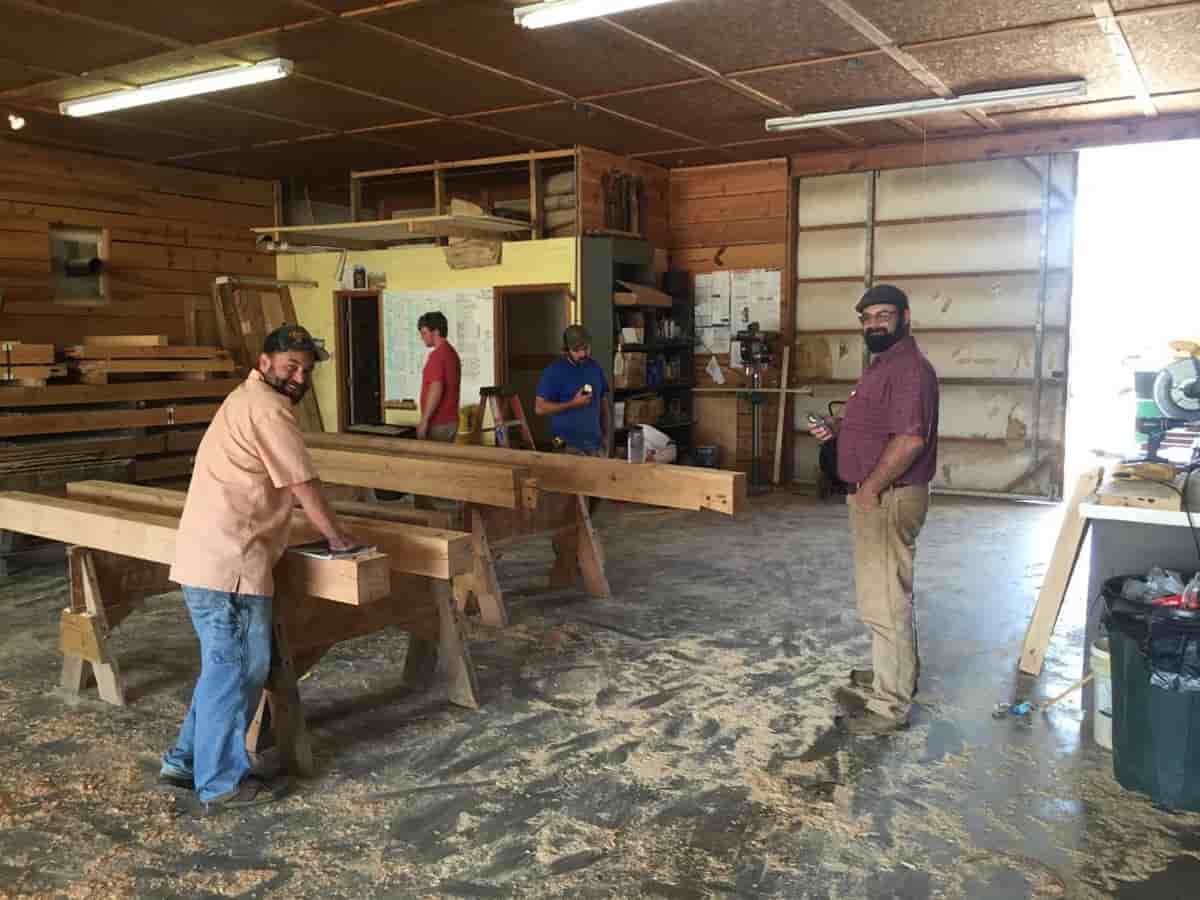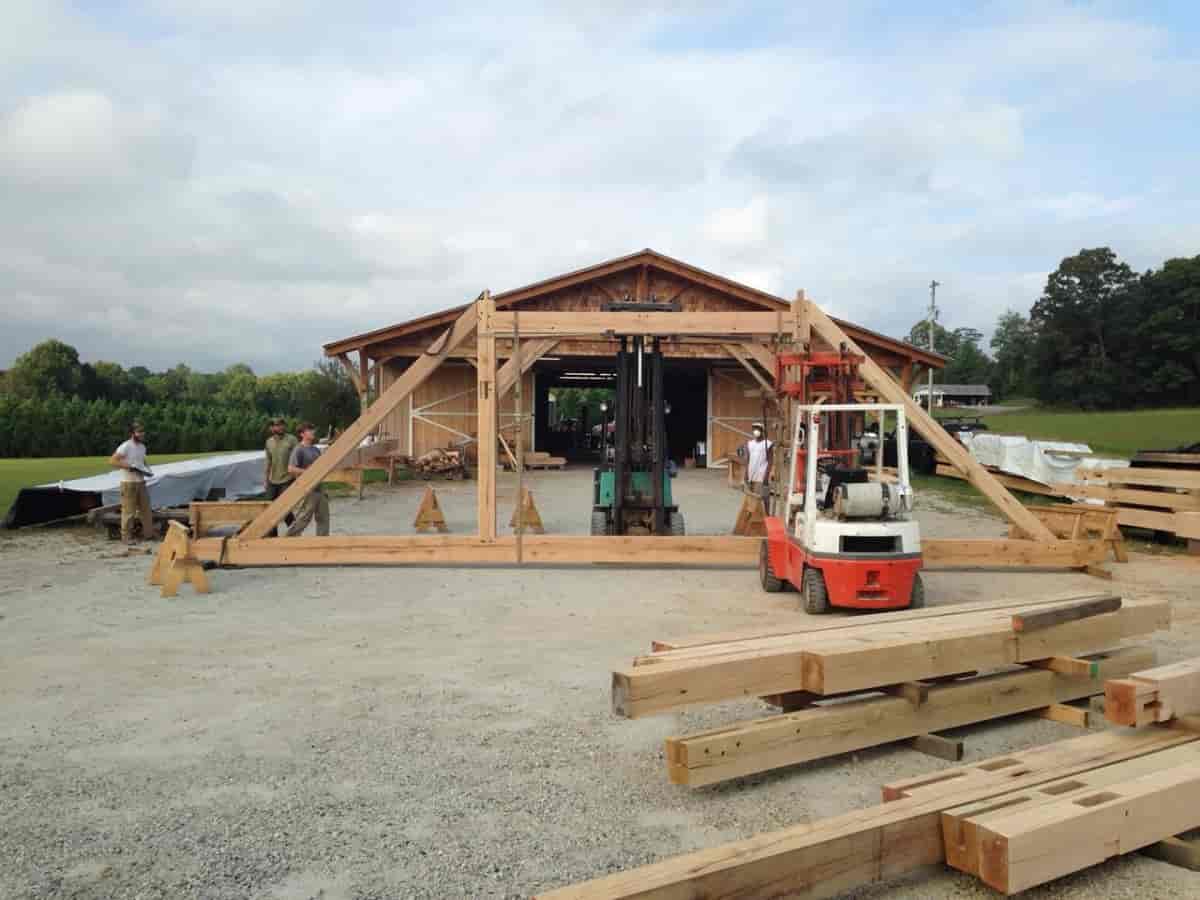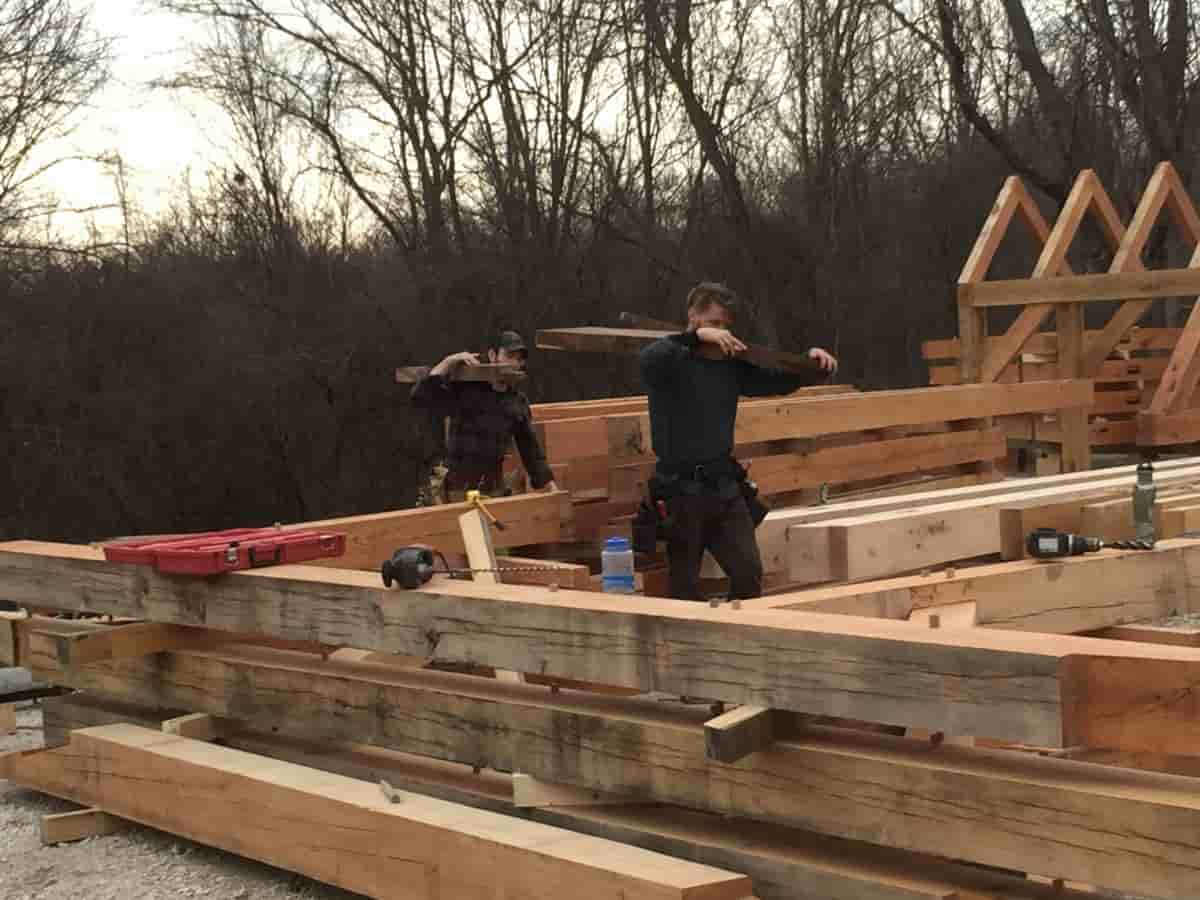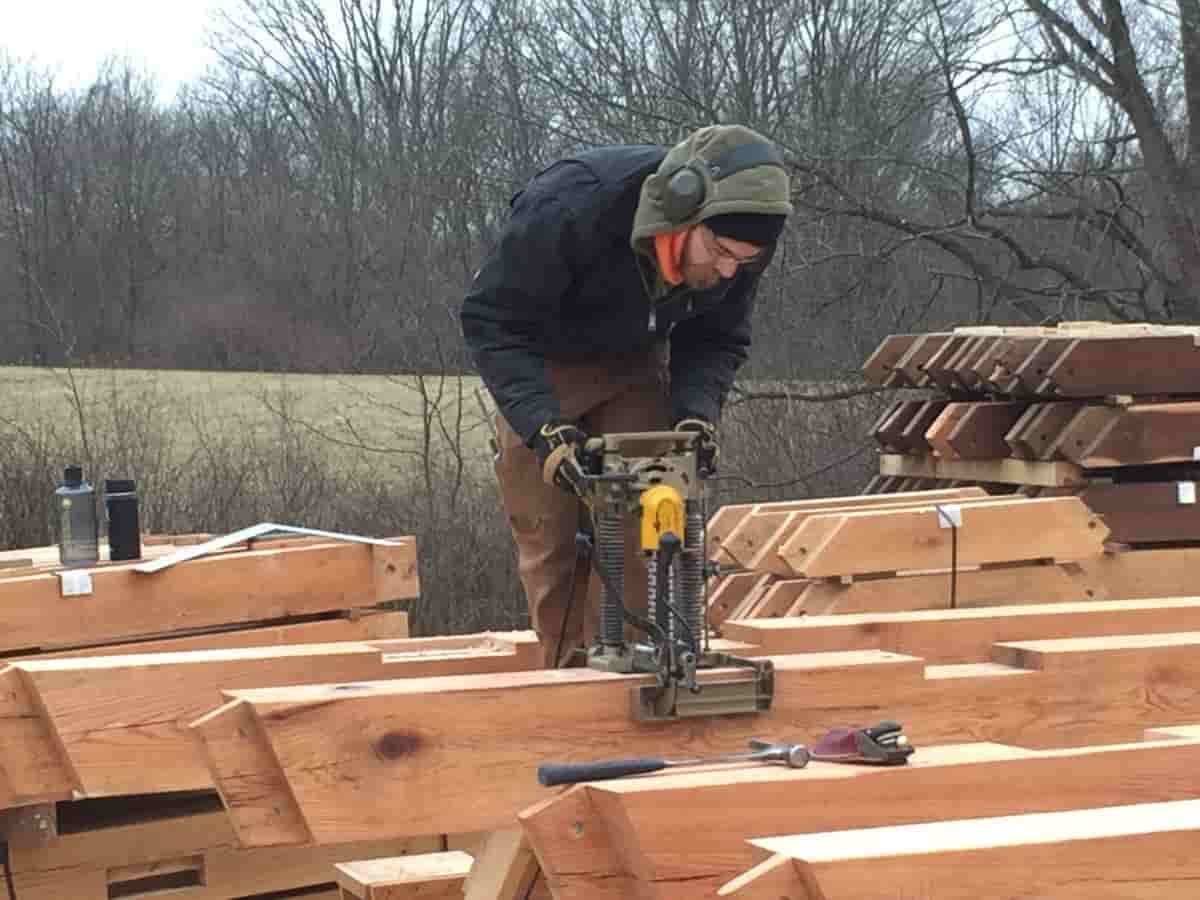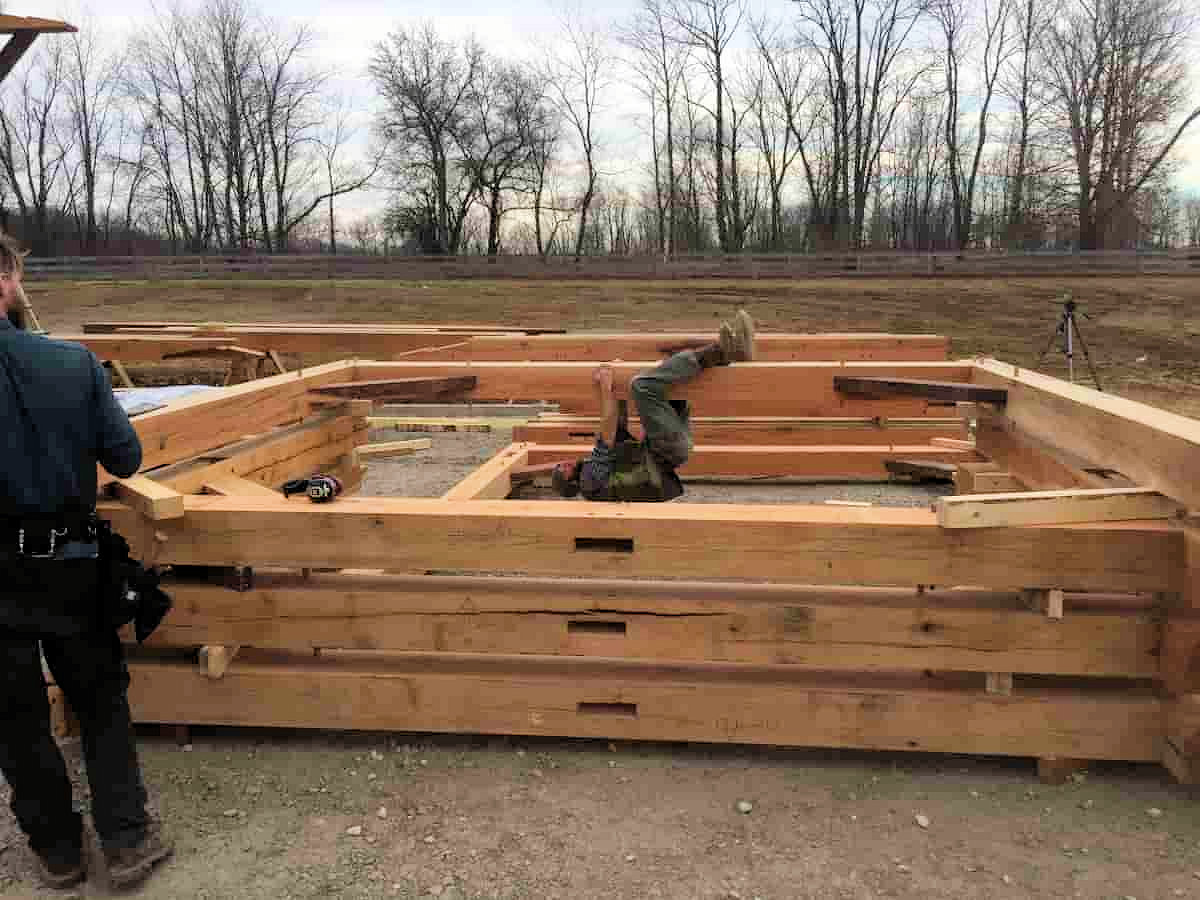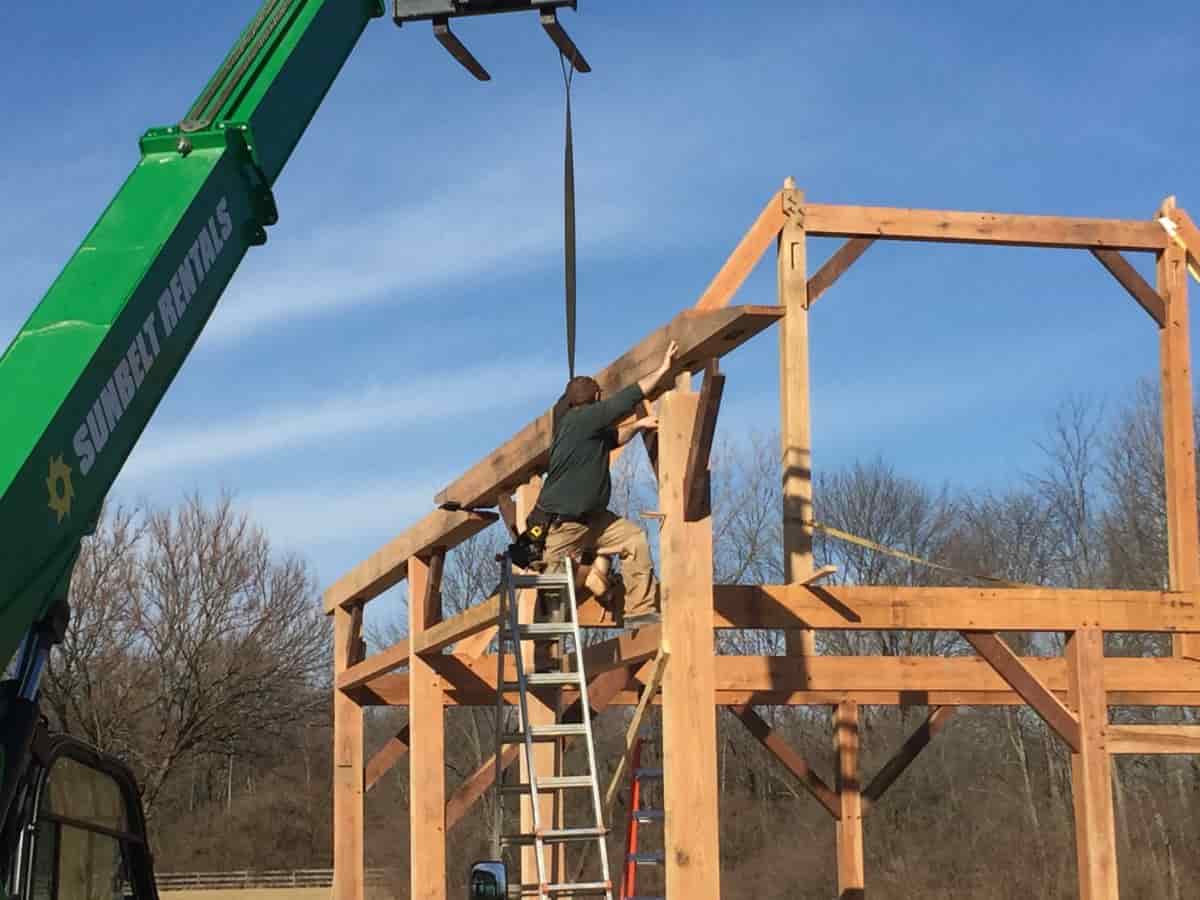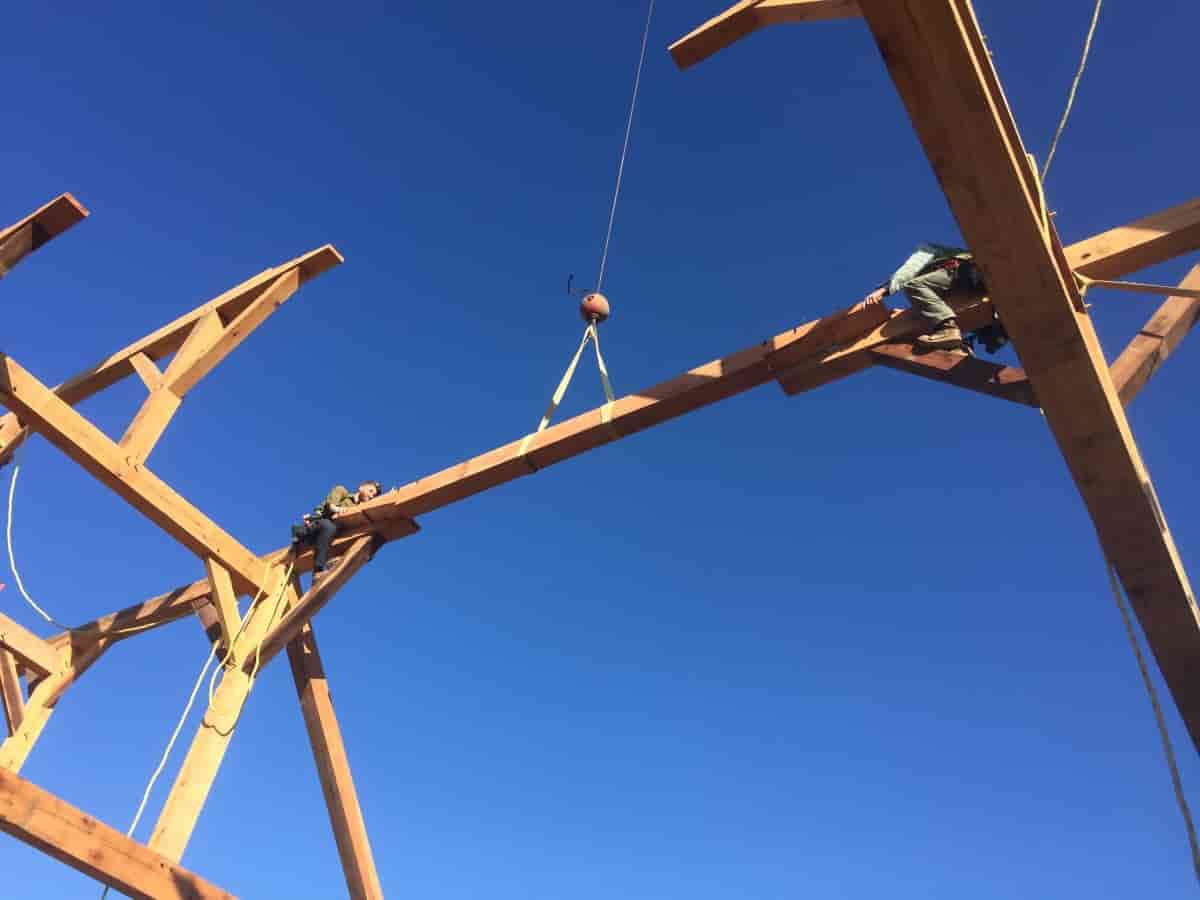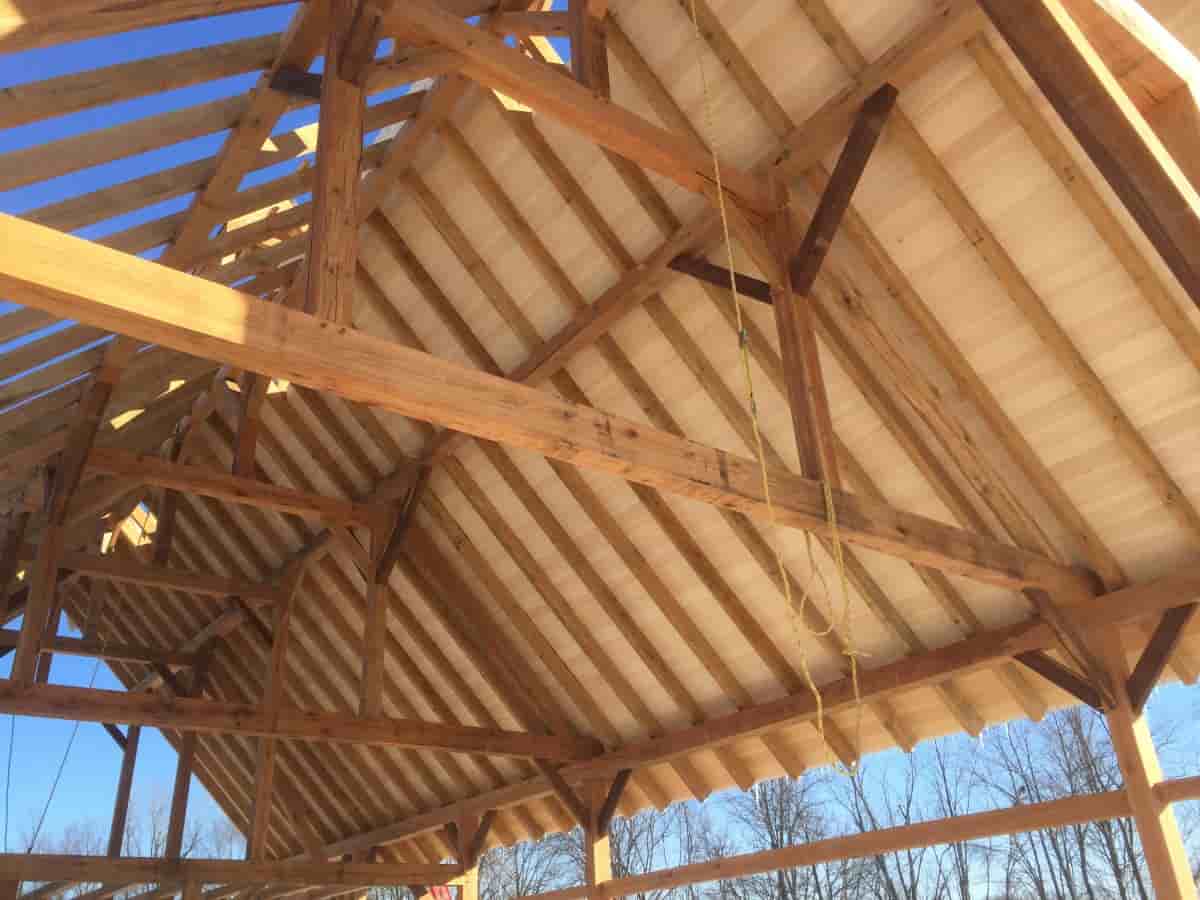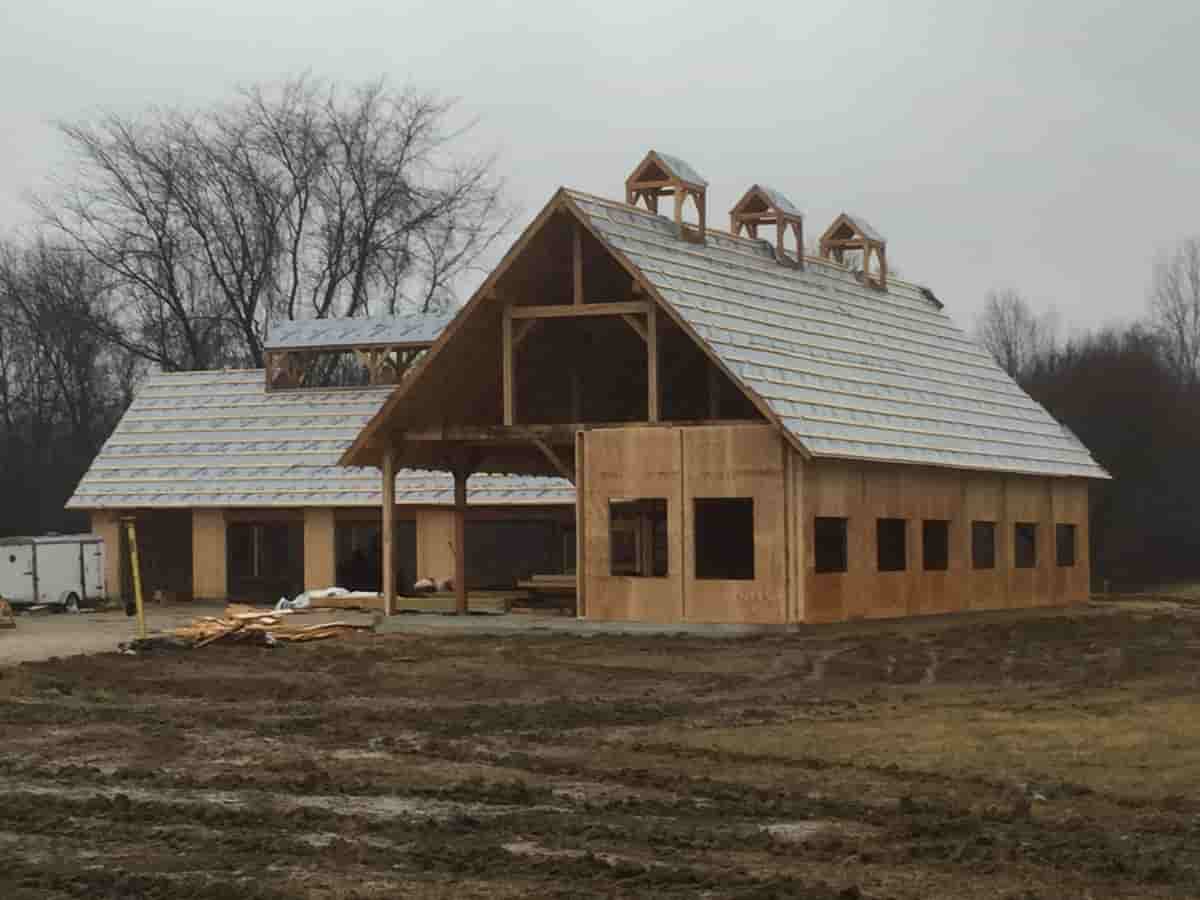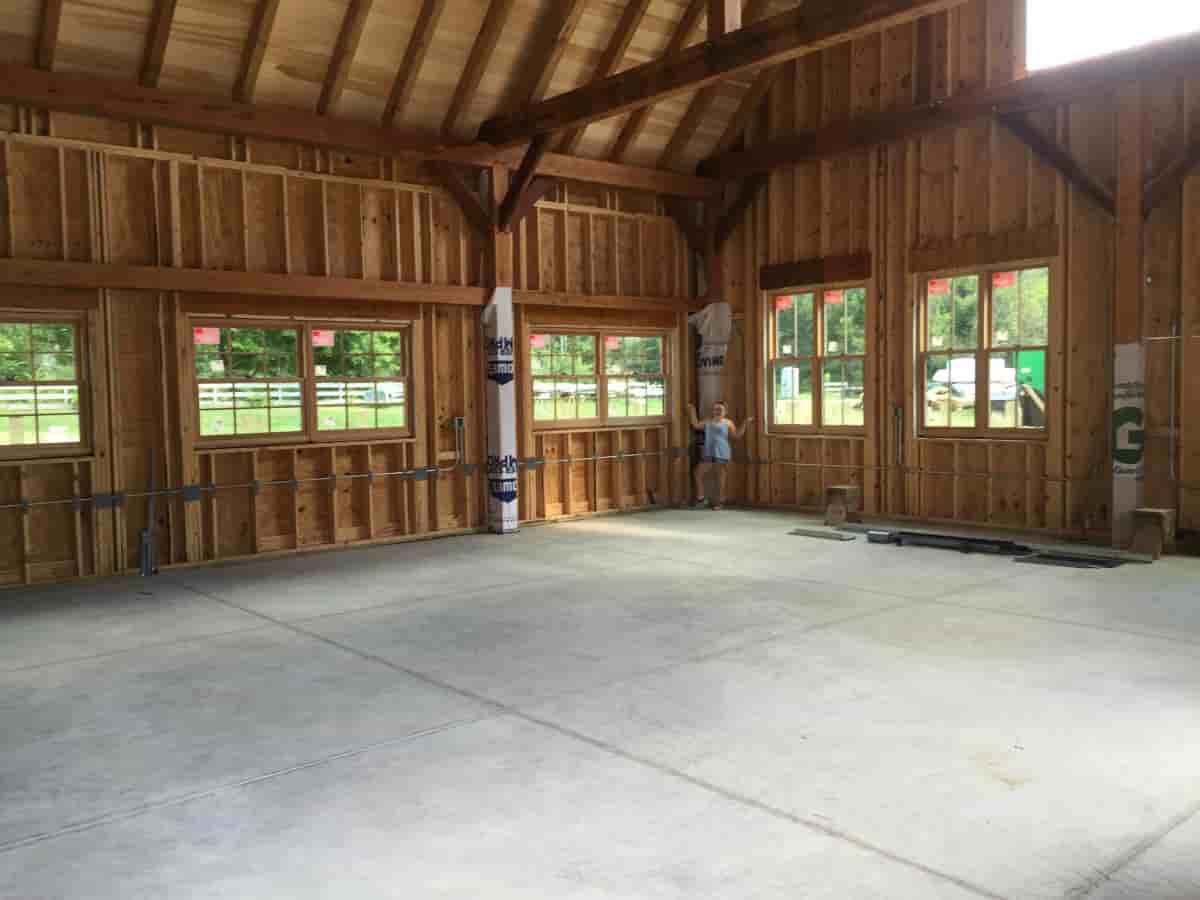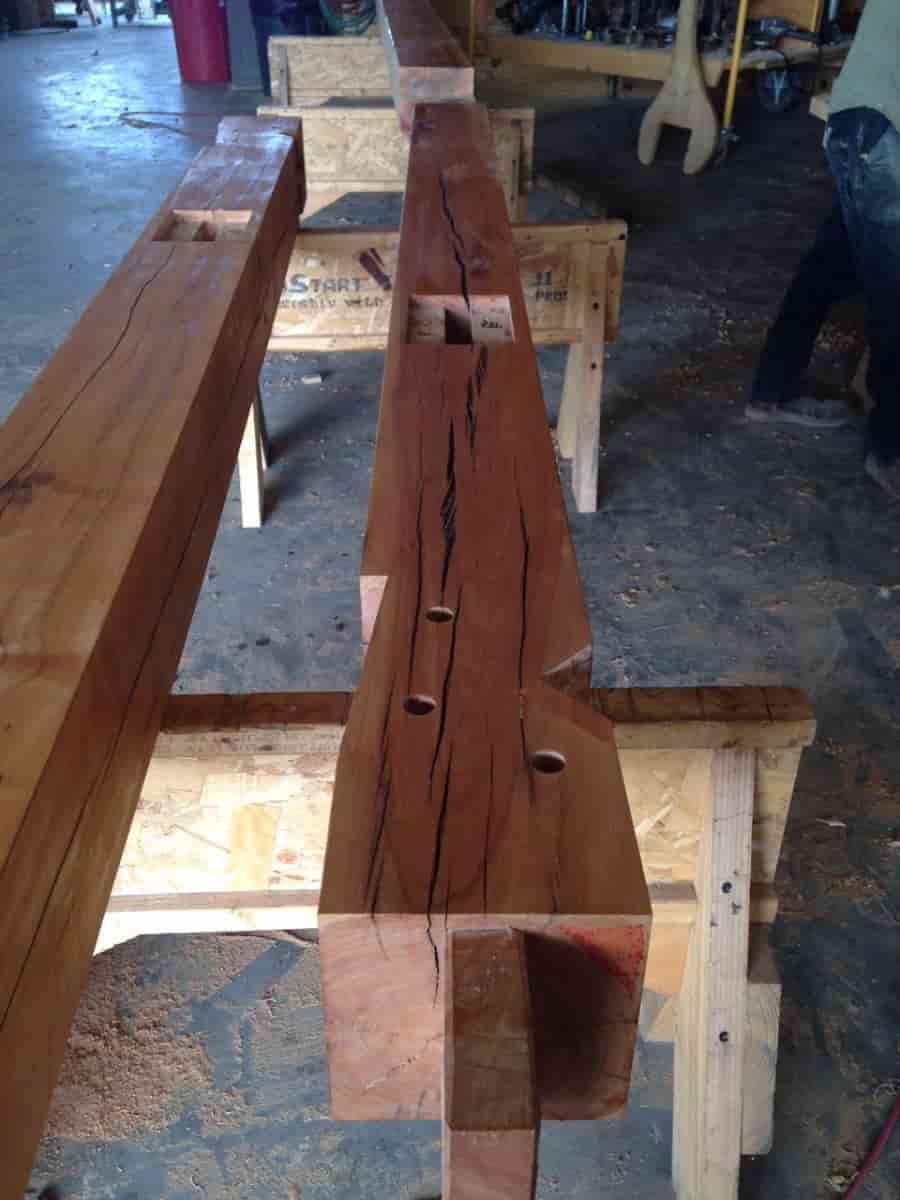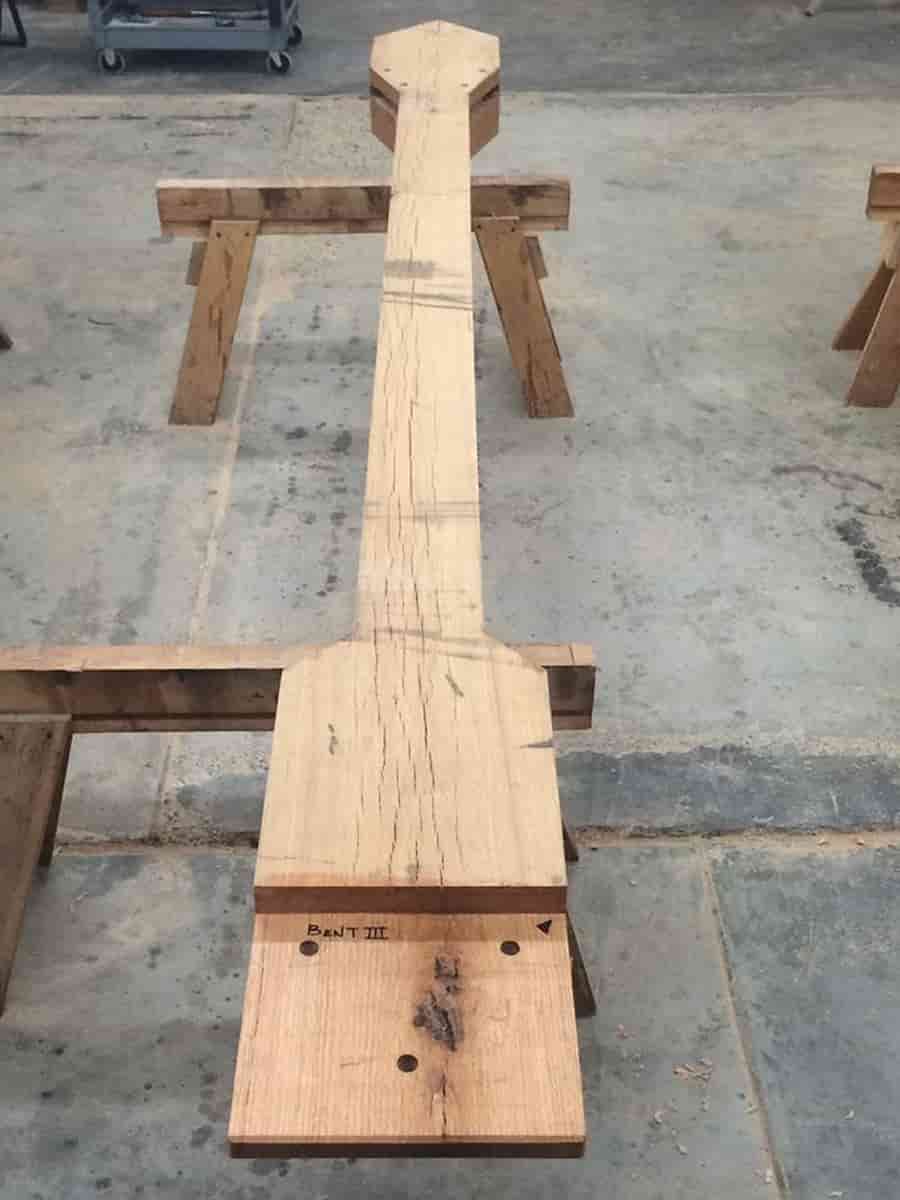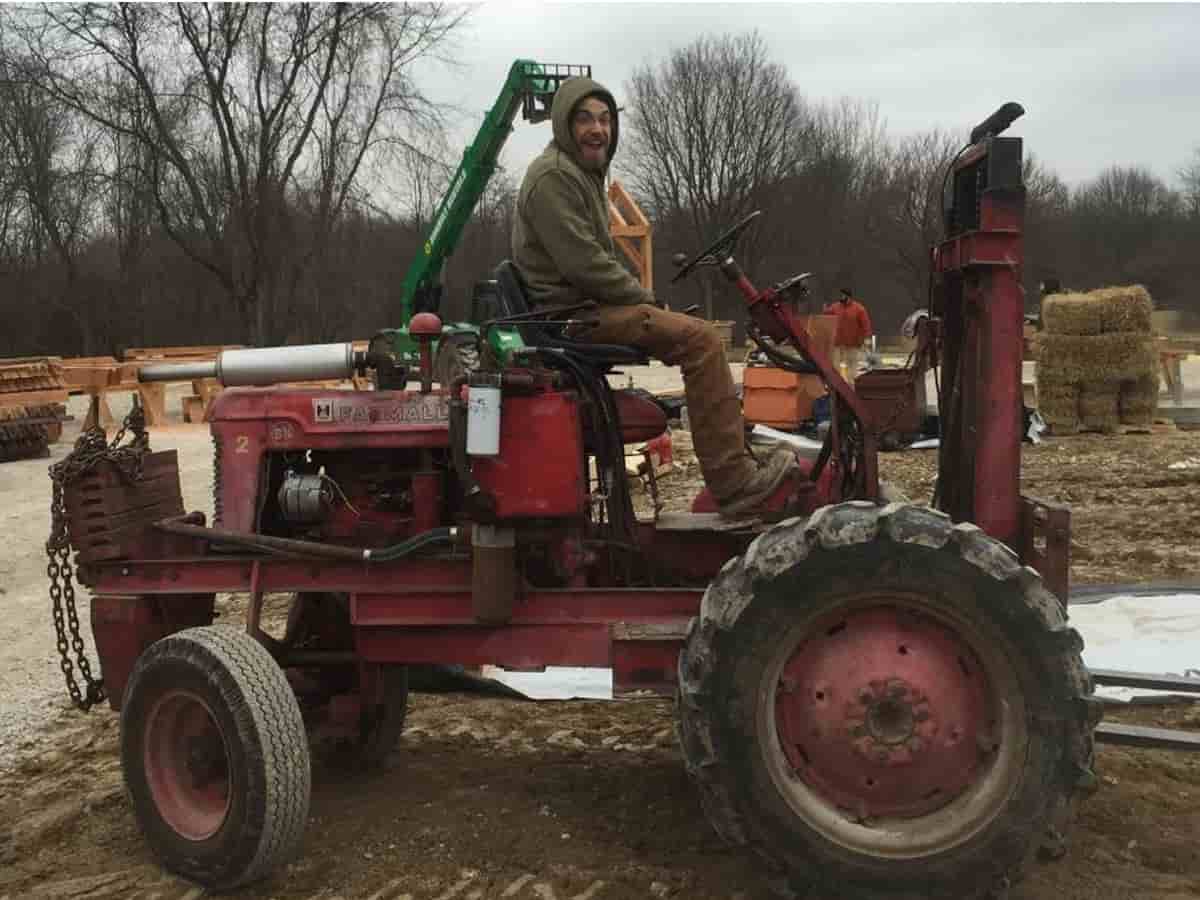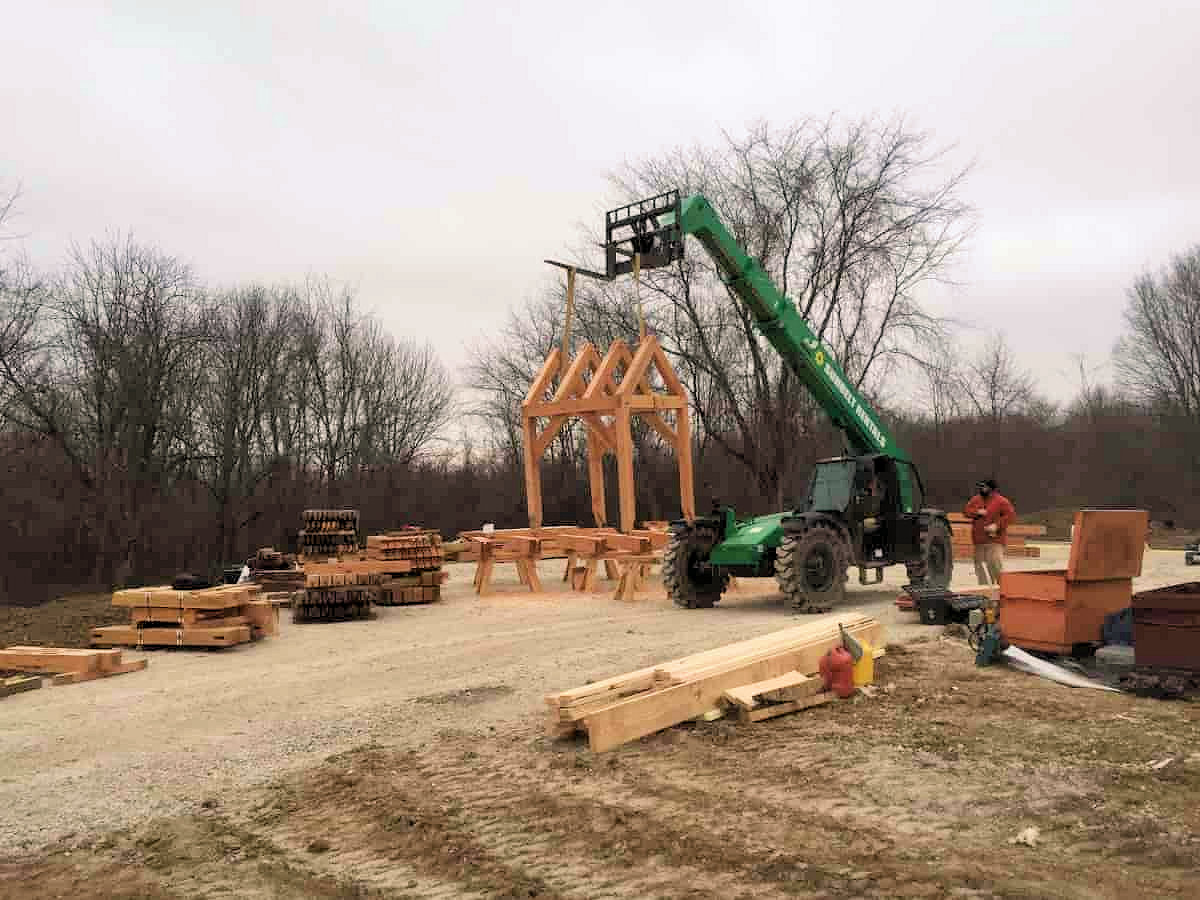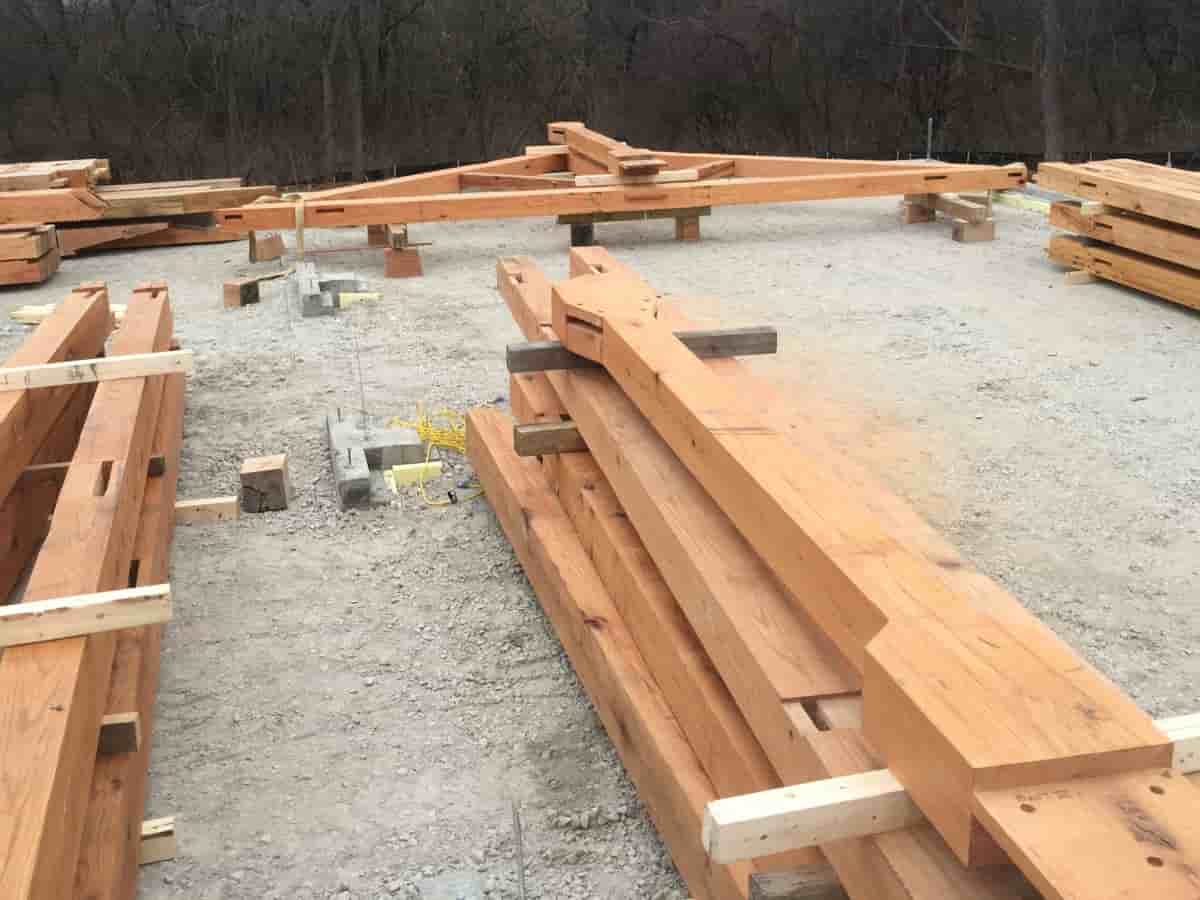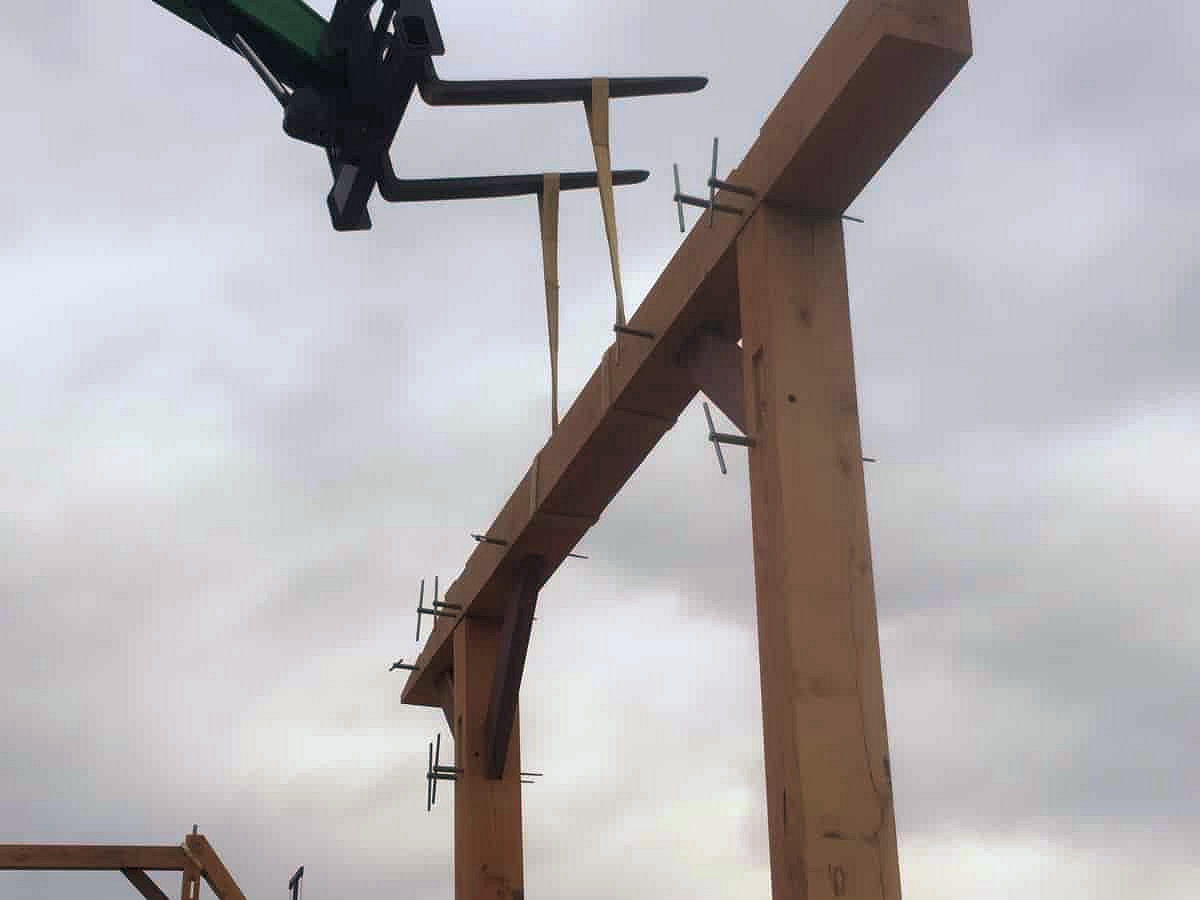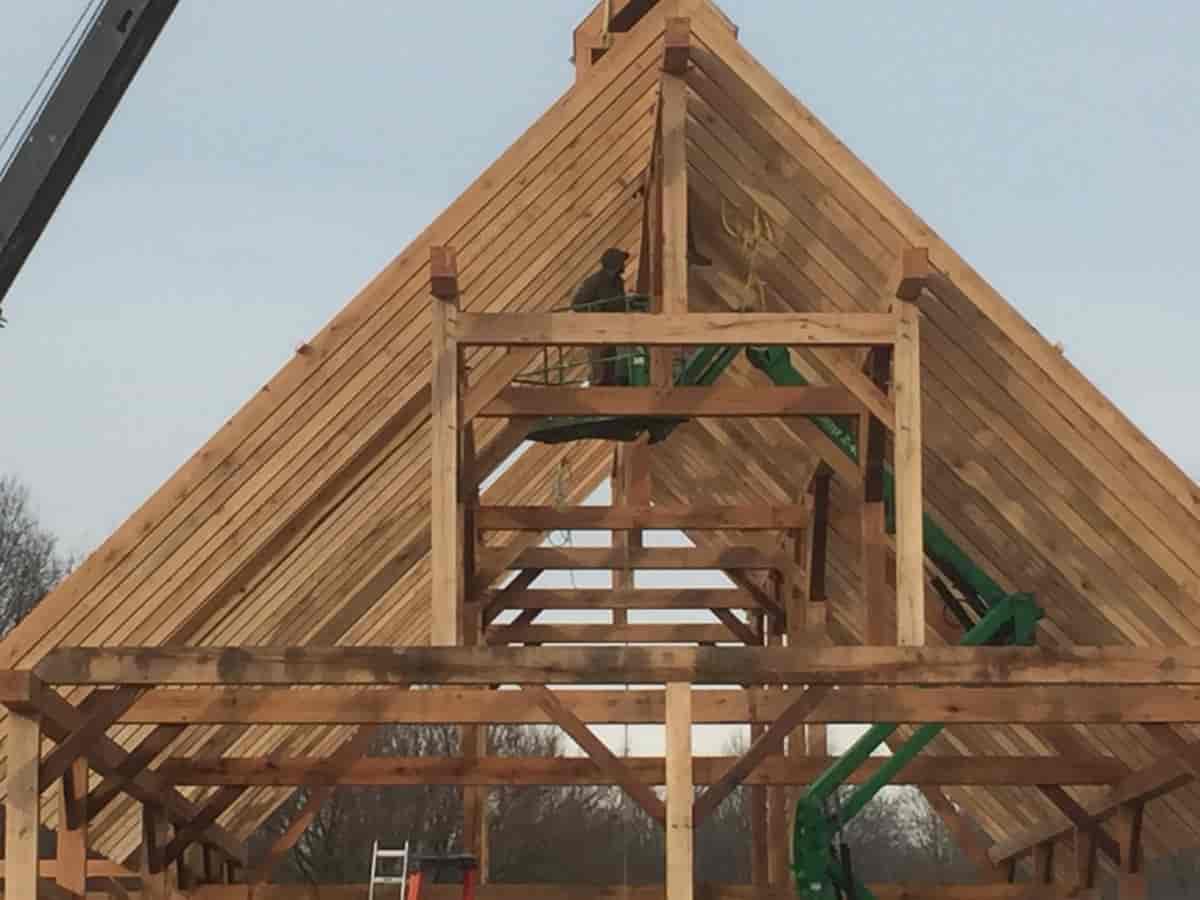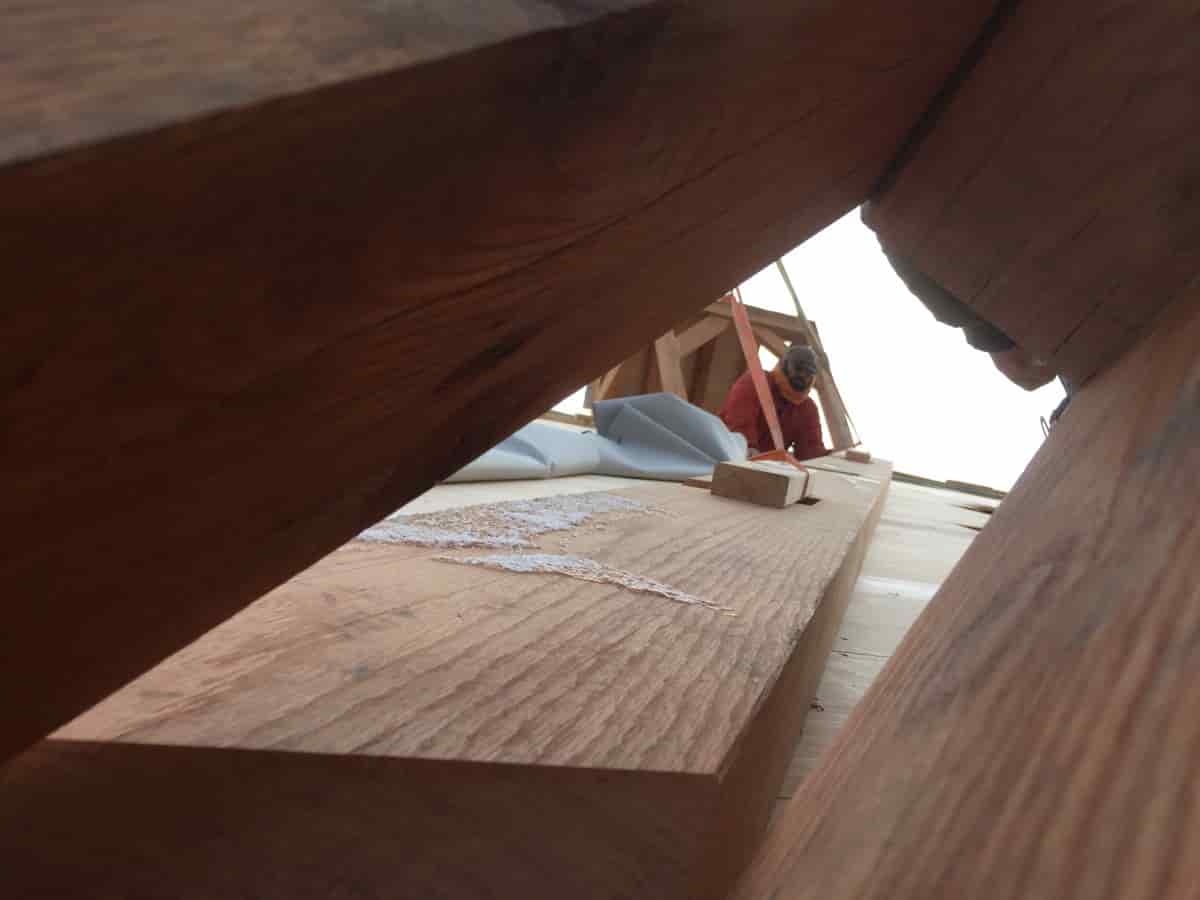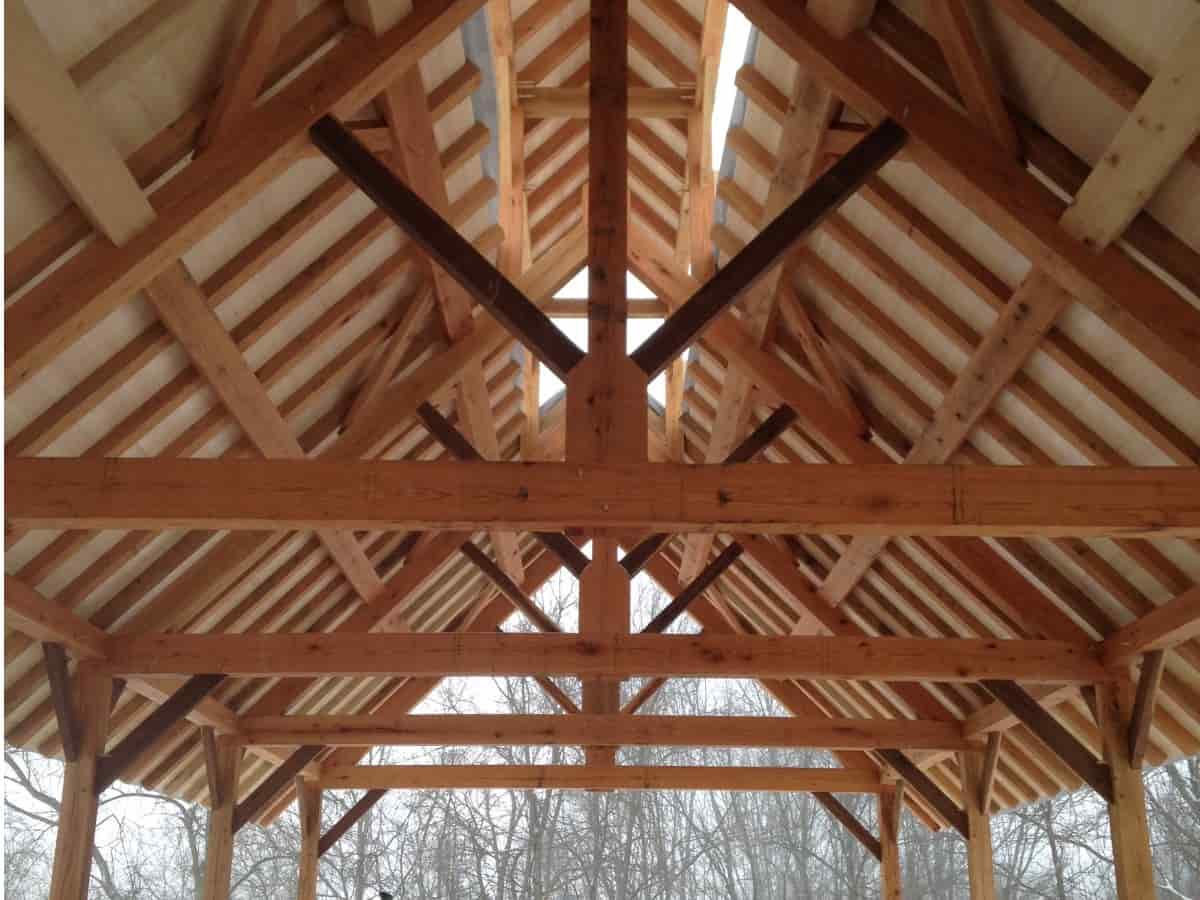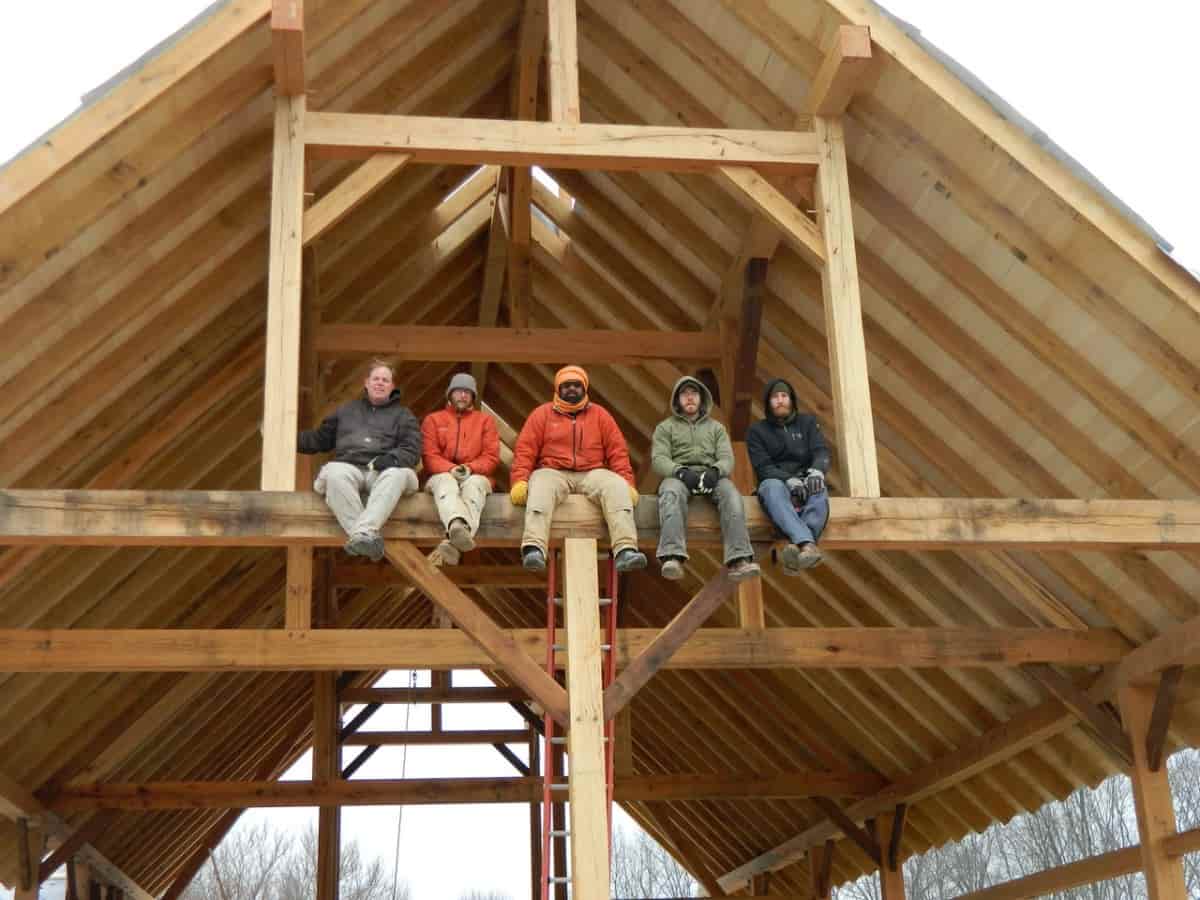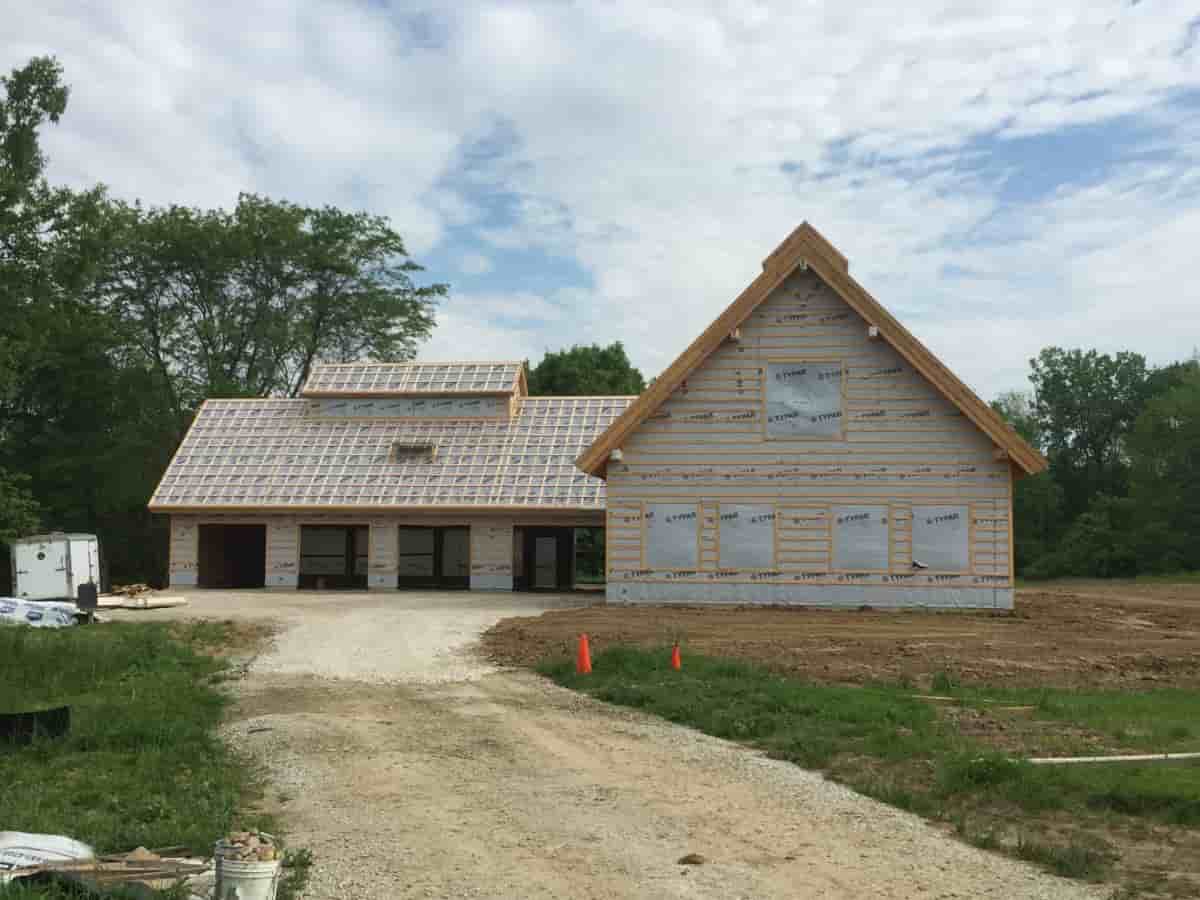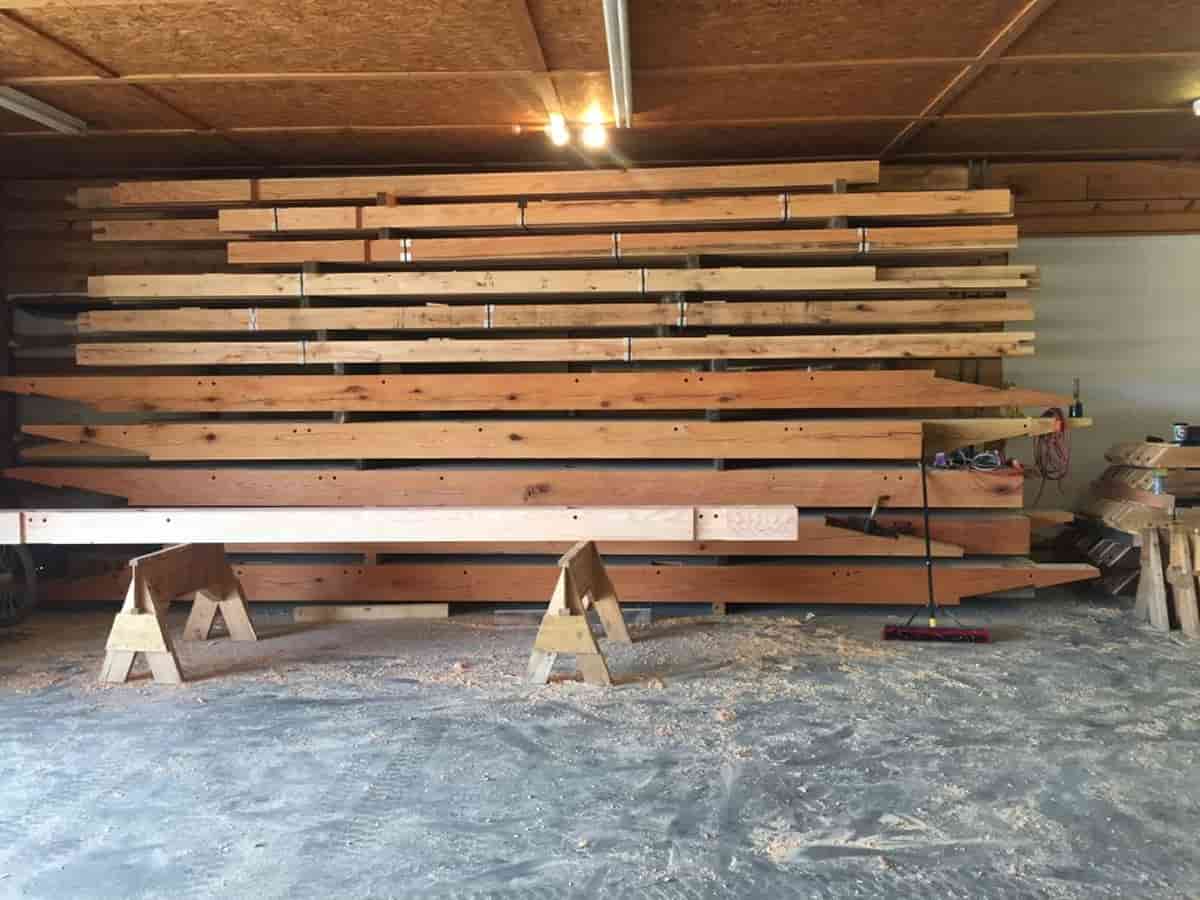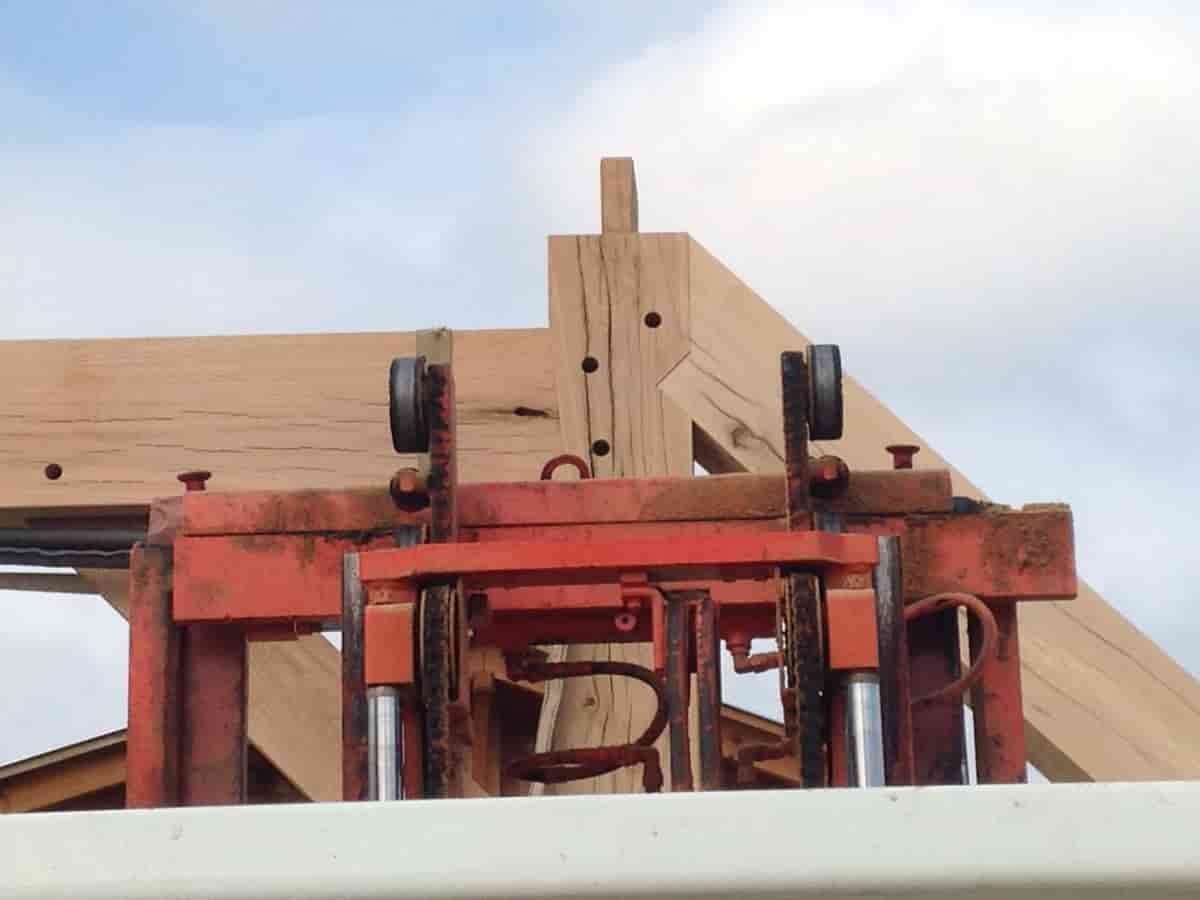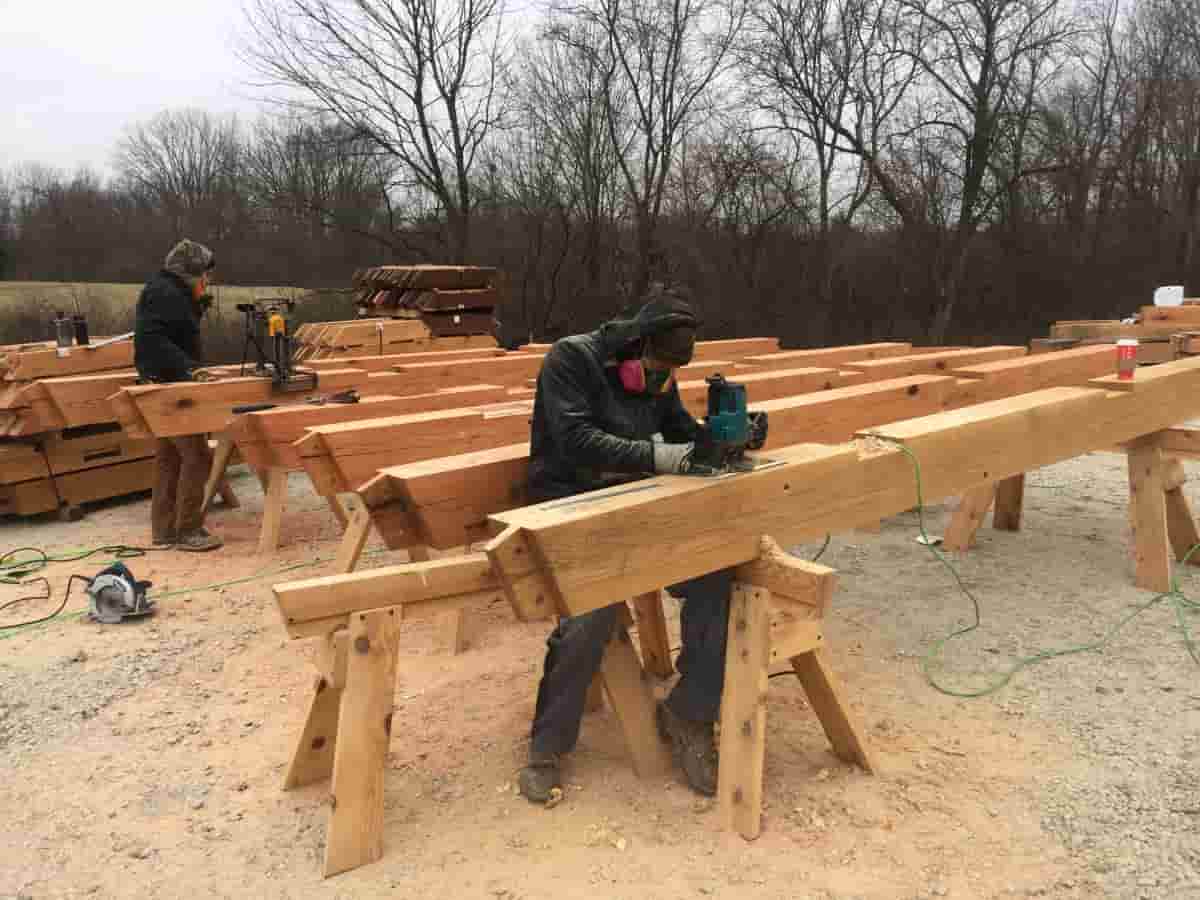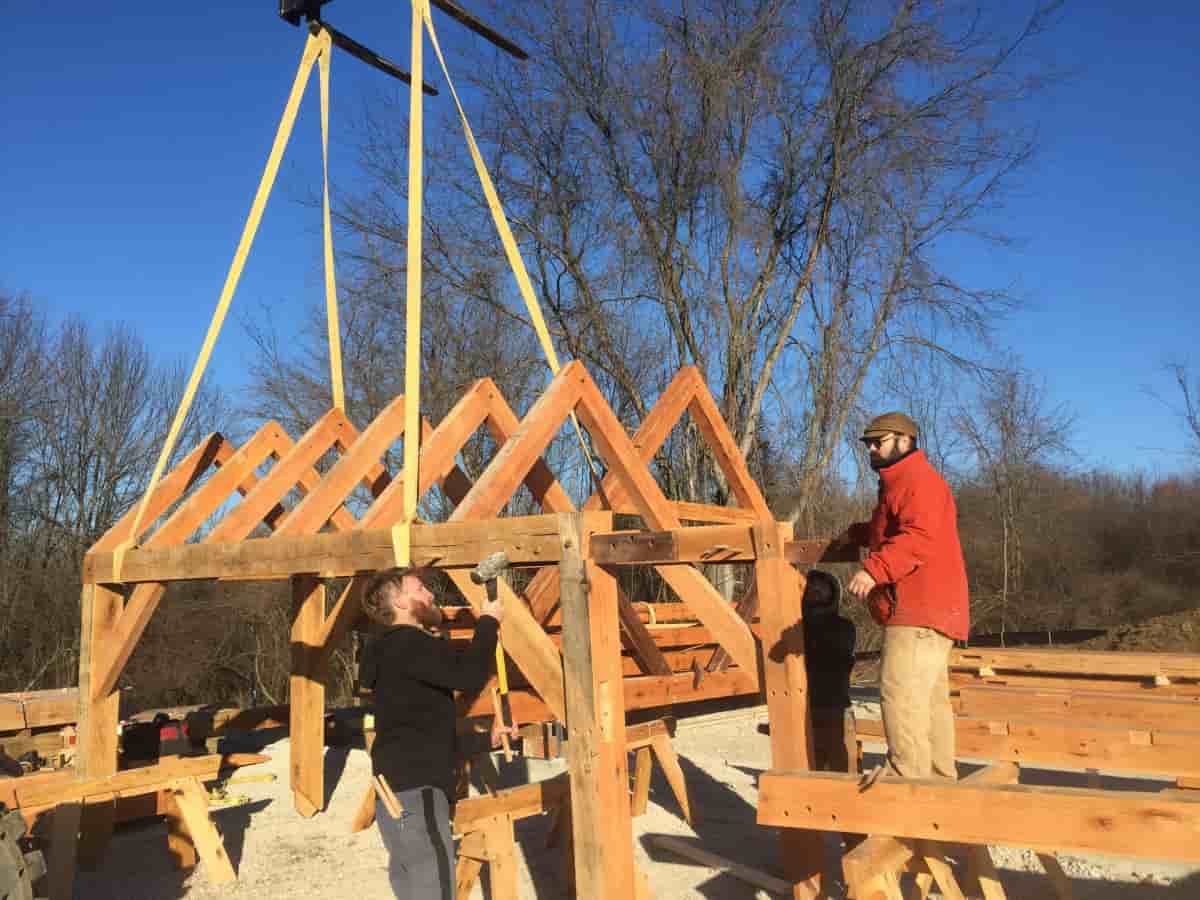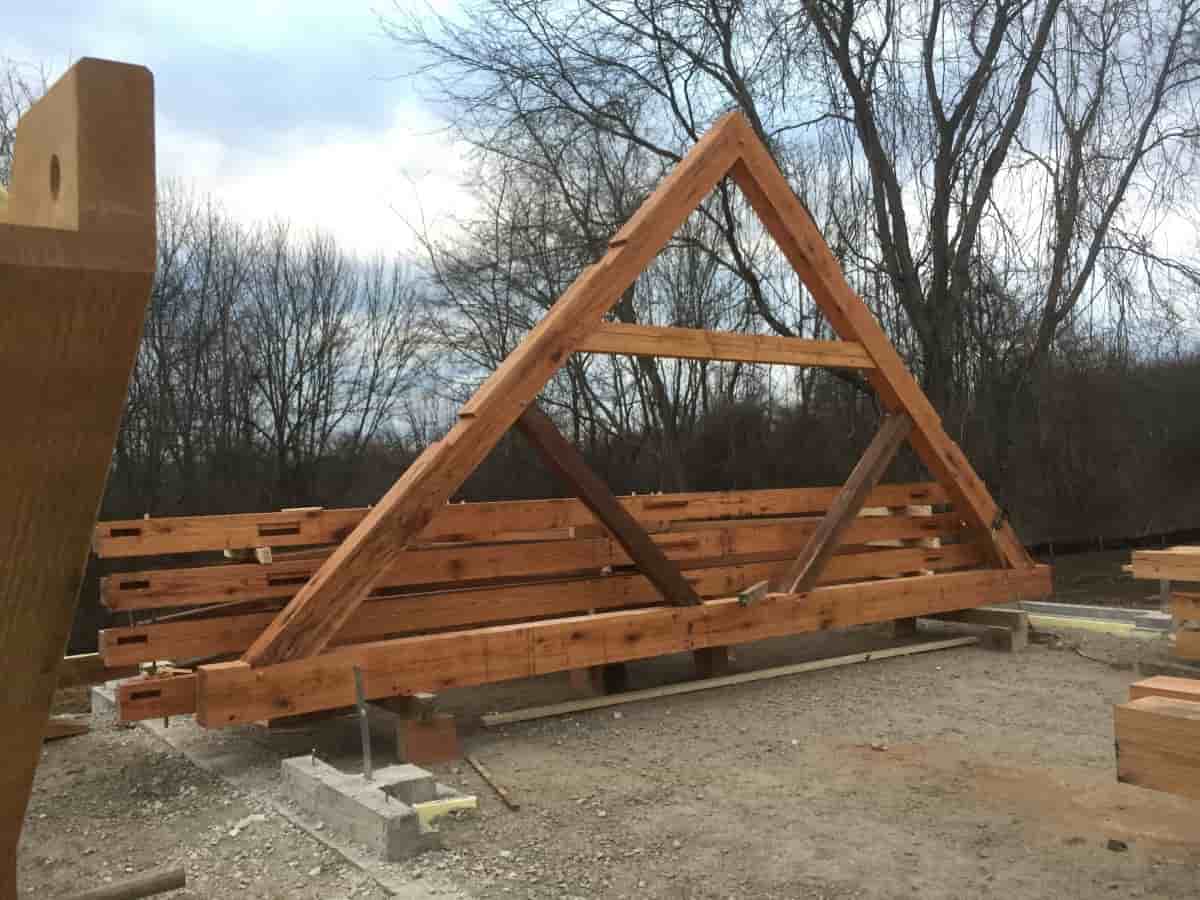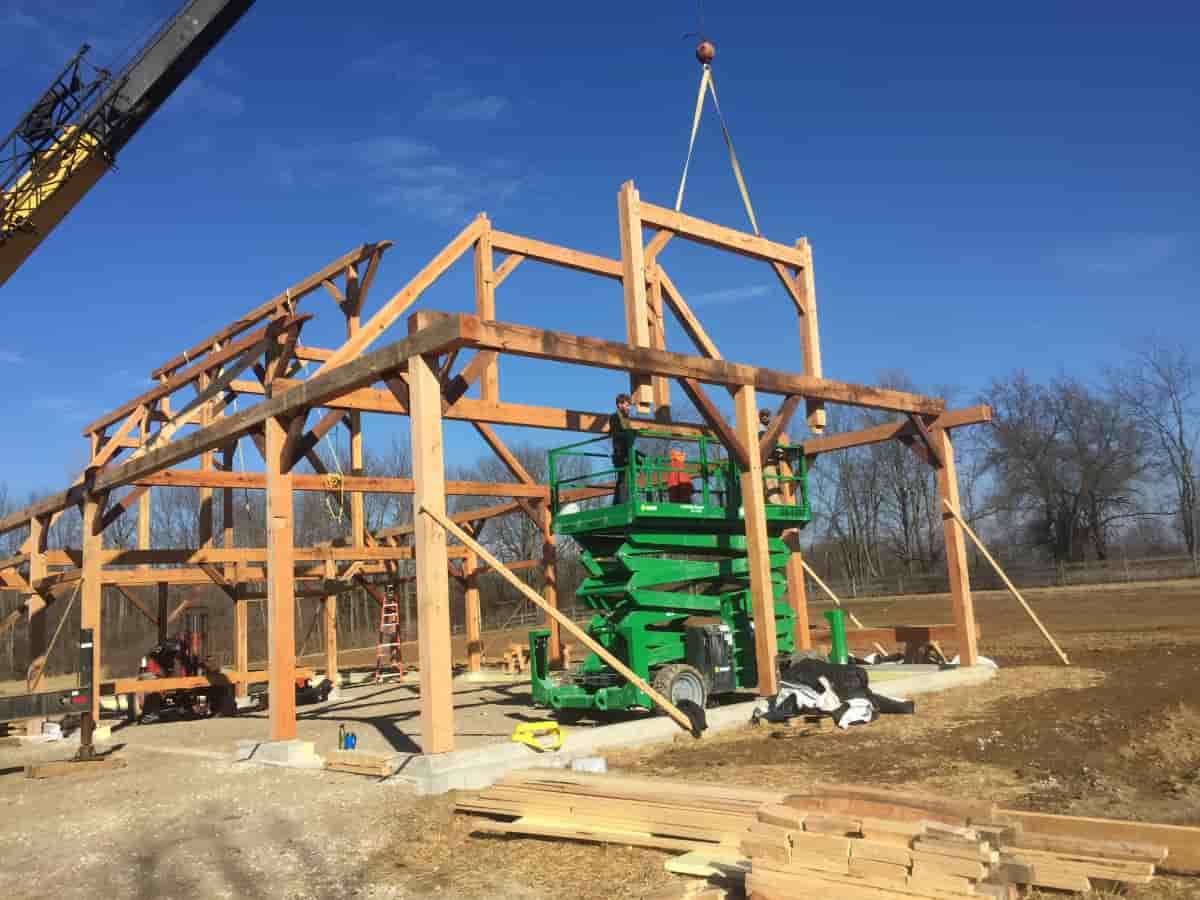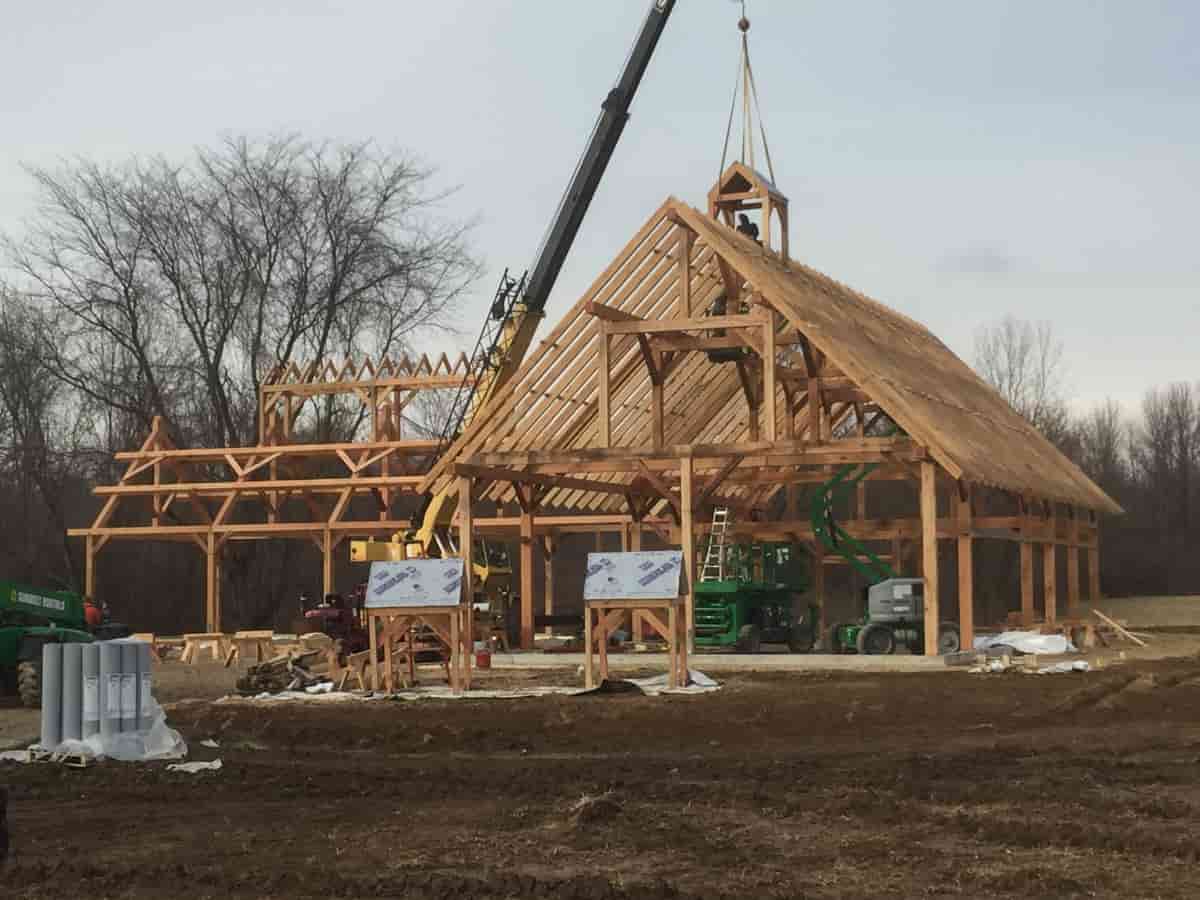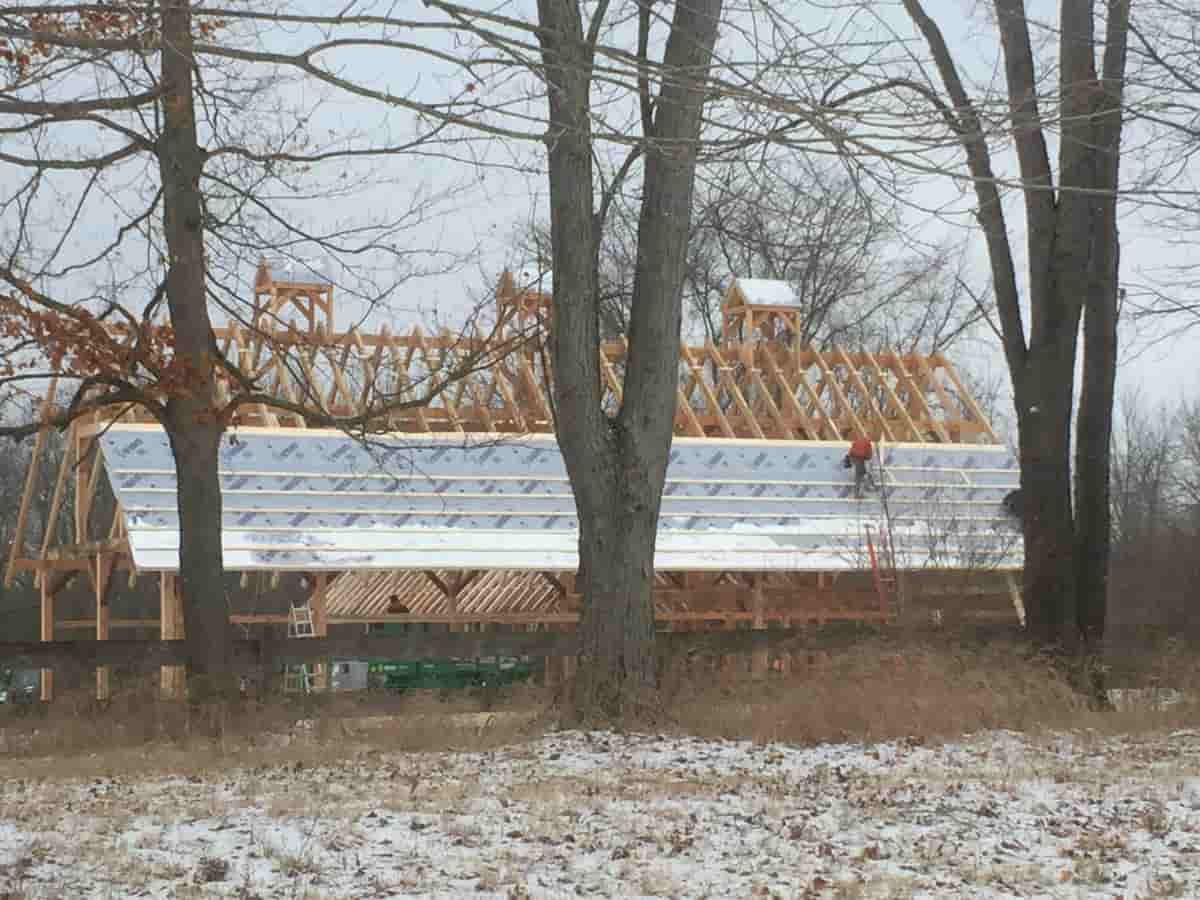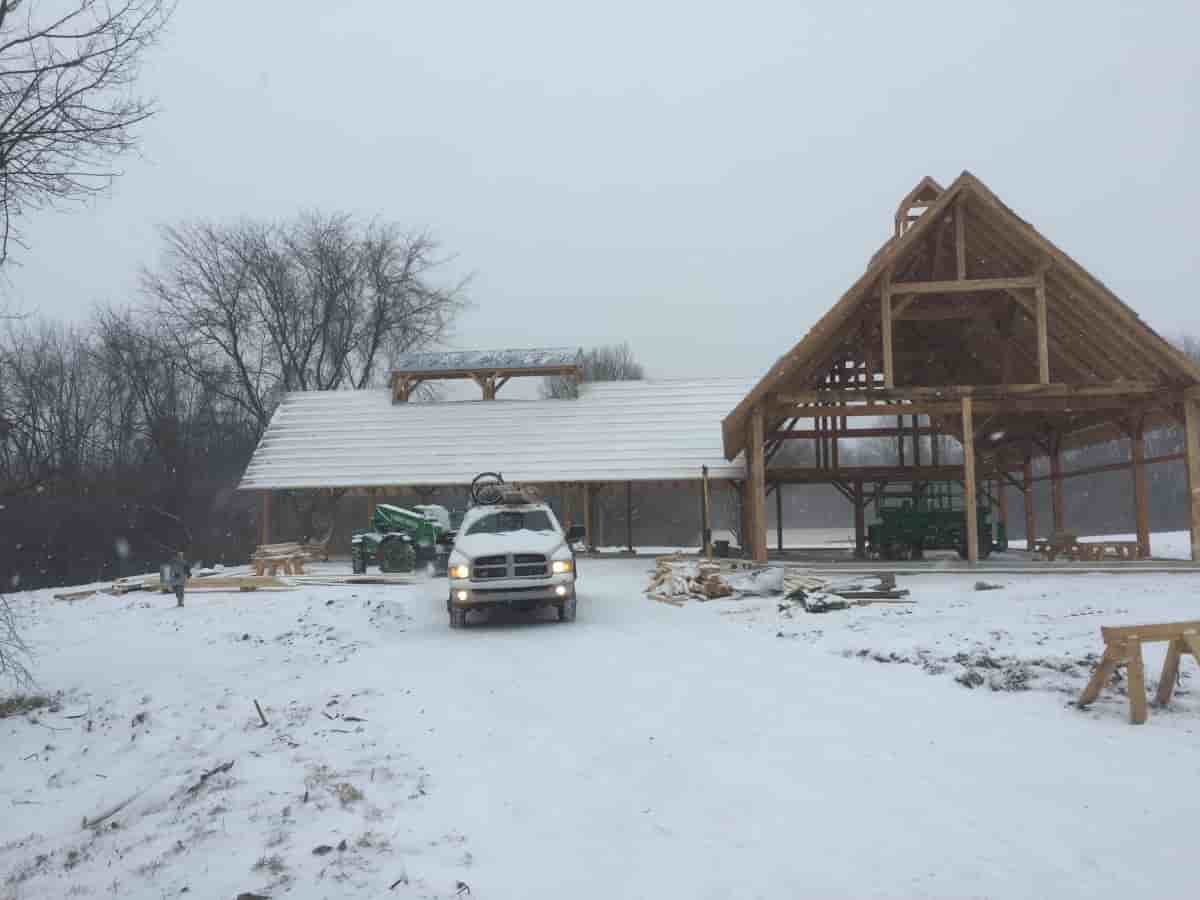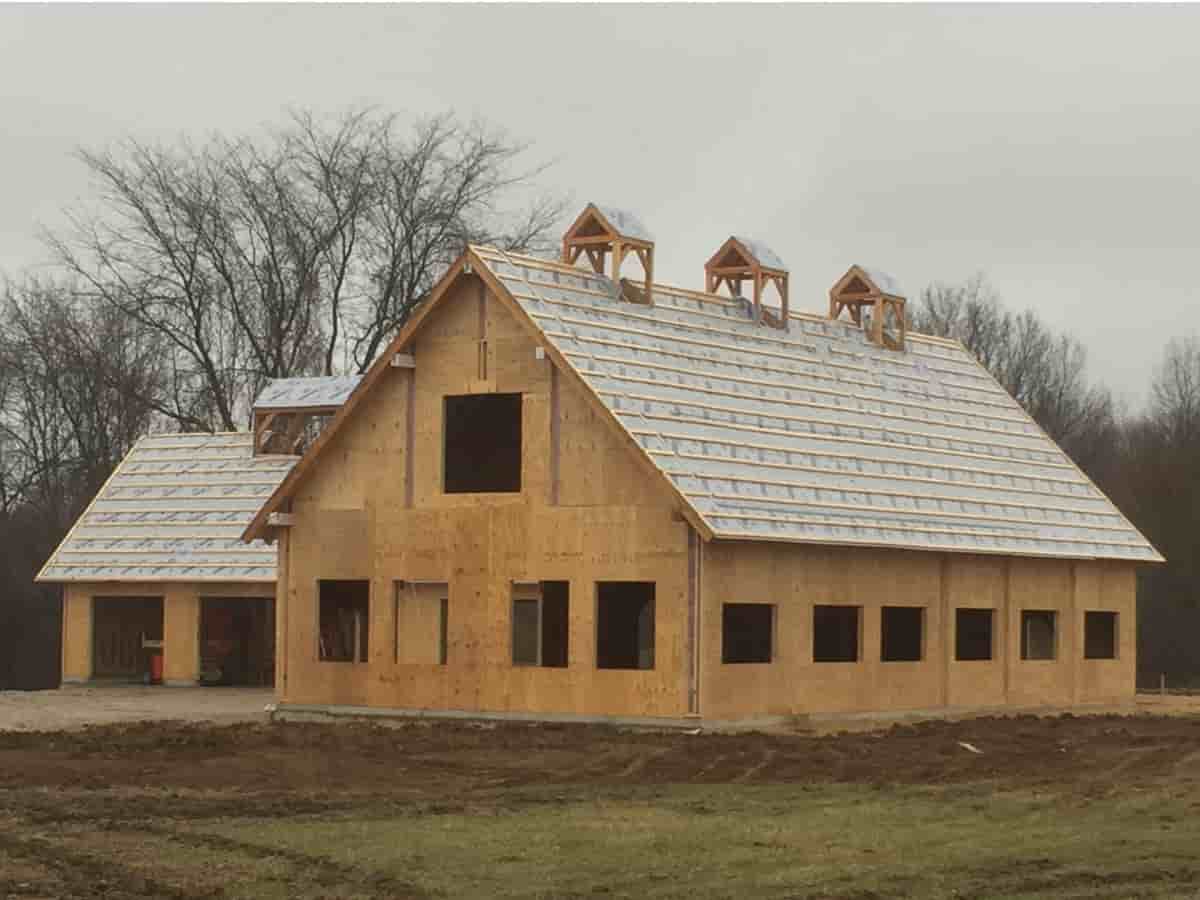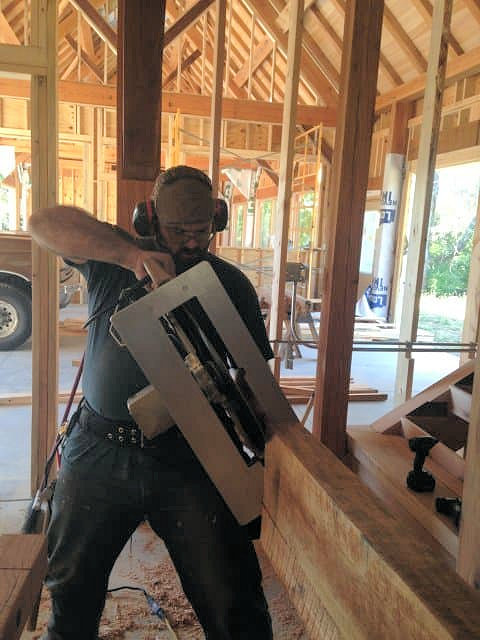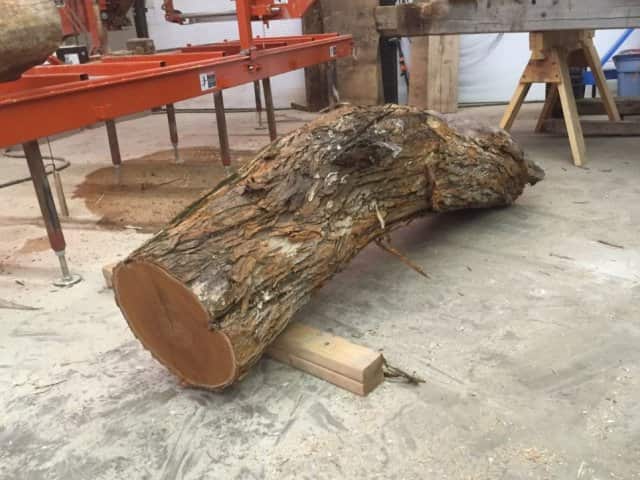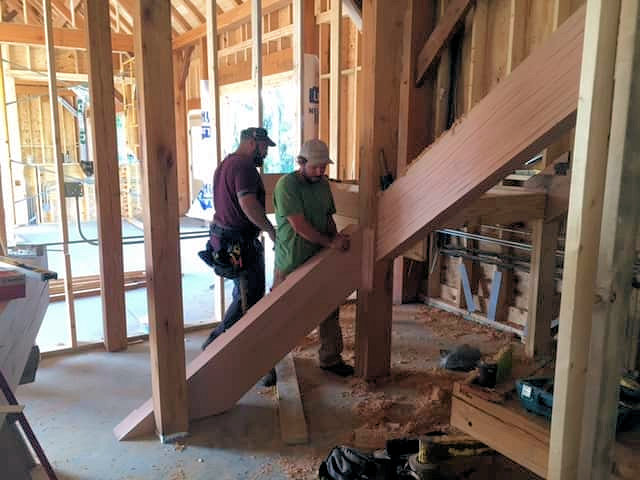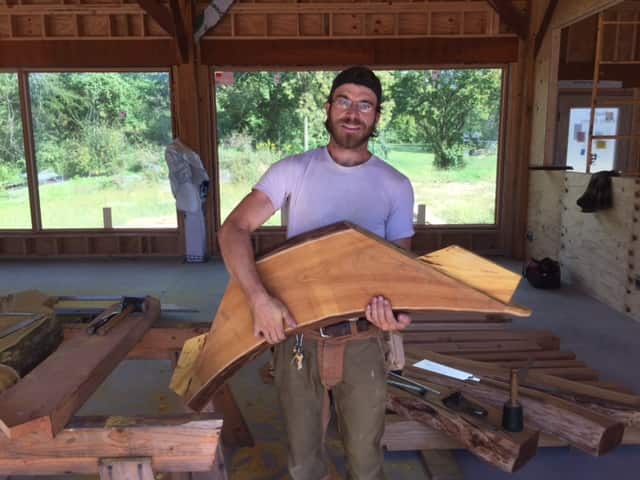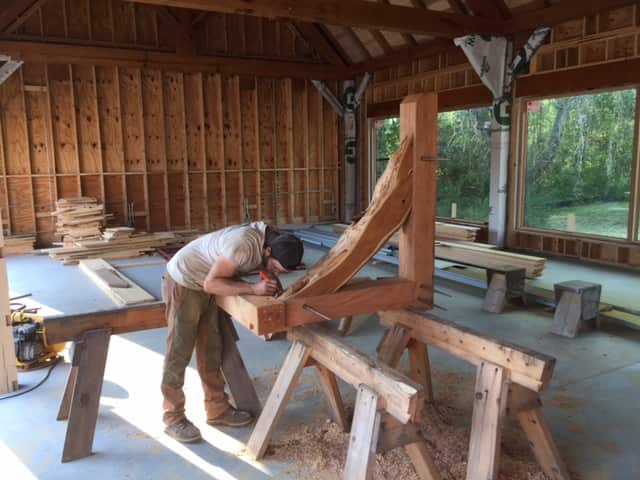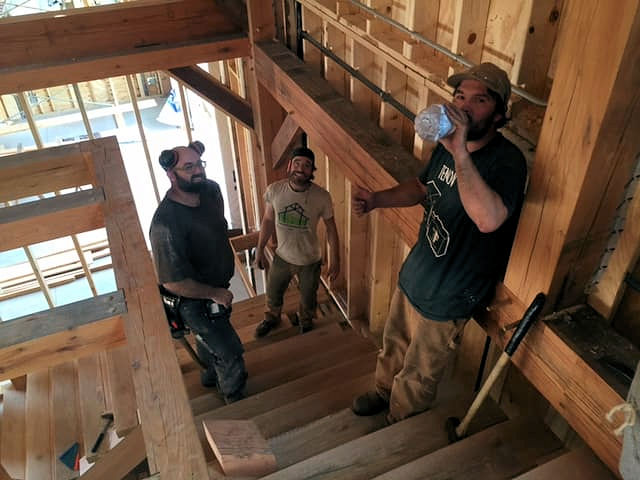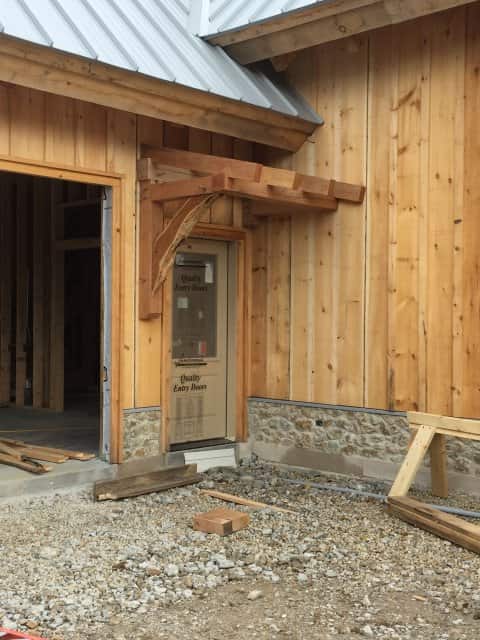There's a fungus among us ....... and if you like it we can highlight it in your timber frame!
Wood and fungi have a symbiotic relationship. That is an interaction between species that is sometimes beneficial, sometimes harmful, to one or both of the parties. The relationship between timber and fungi begins in the woods, where we’ll start our journey.
You’ve seen mushrooms growing in the woods or along creeks or even in your yard. Fungi produce mushrooms. The mushroom is like a flower or the fruit on a plant. (A side note: all mushrooms are fungi, but not all fungi produce mushrooms.) In the forest, fungi help to distribute resources from trees. They get nutrients from the roots of trees, both healthy and dying, and distribute the nutrients back into the soil. Then, coming full circle, the nutrients end up back in the trees.

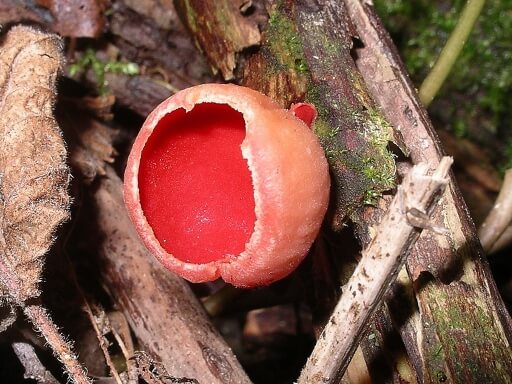
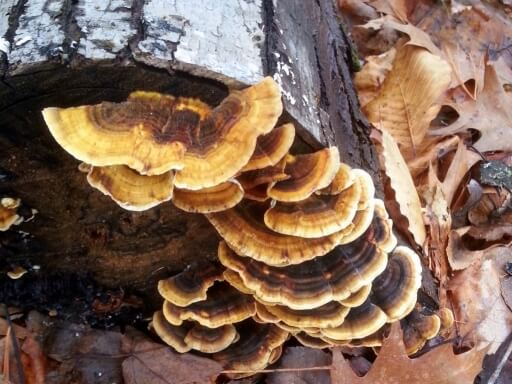
Fungi Causes Spalting
Fungi can cause coloration of the wood in trees, known as spalting. Spalting is most often found in dead trees, but it can also occur in living trees that are under stress. Both deciduous (hardwood) and conifer (softwood) trees can spalt. The change in color is caused by the fungi producing pigments that are either outside of their cellular structure or in branching-out filaments, and inside of the wood.
Spalting can result in dotting, pockets of color, or winding lines and thin streaks. The colors range from white to black, blue, gray, red, yellow, orange and even purple. Some types of spalting are caused not by the fungus itself, but as a result of fungi erecting protective barriers to guard their resources.
Blue Stain
One type of spalting that is highly prized by many woodworkers is blue stain. When the fungus spores germinate they produce a thread-like mass that colonizes the sapwood and vascular tissues of the tree. The spores block the water pathways in the tree and starve it of nutrients, eventually killing the tree. Blue stain can be found in several types of Pine trees and Douglas Firs.
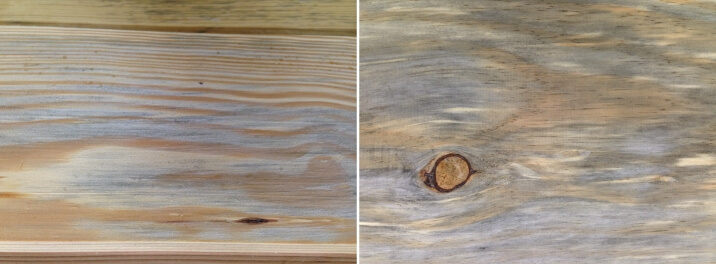
Blue stain on Southern Yellow Pine
Creating Spalted Wood
Pale hardwoods, such as Maples, Birch and Beech, are ideal for spalting. Spalted timbers can be created, as they were in these Poplar tongue & groove ceiling boards. This supplier has a process that involves burying trees after cutting them down. They are later dug up and milled into timbers.
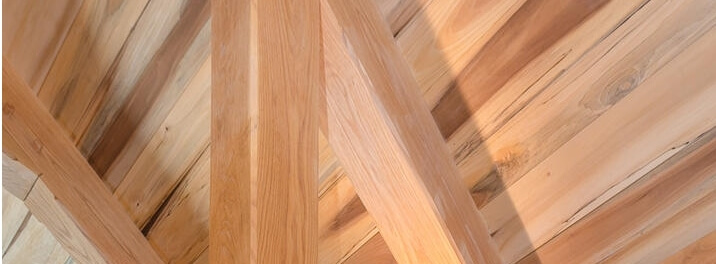
Northern Spalting, an extension of the Applied Mycology Lab at Oregon State University, is a great source of more information on spalting. You can purchase fungi if you want to try spalting yourself.
We'd be happy to talk to you about options and how to use spalted wood in your timber frame!







